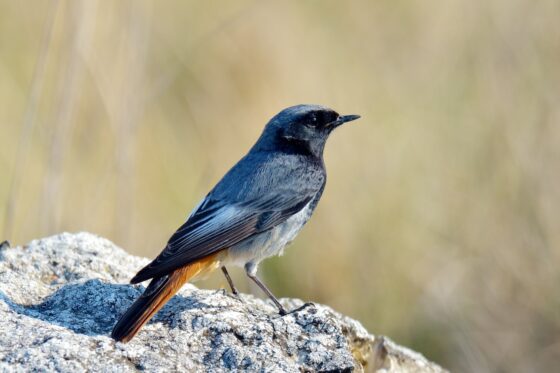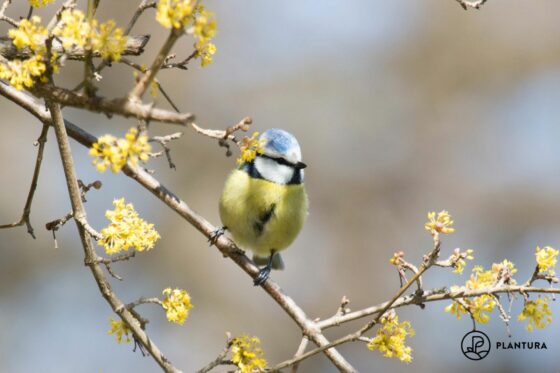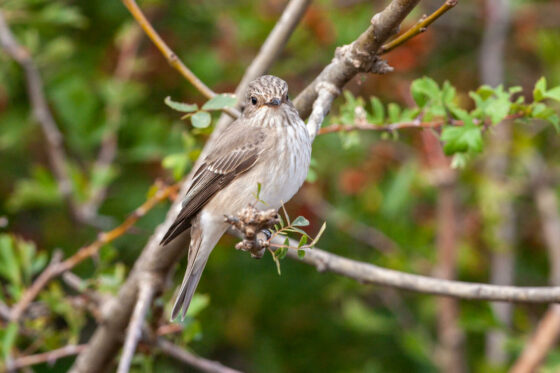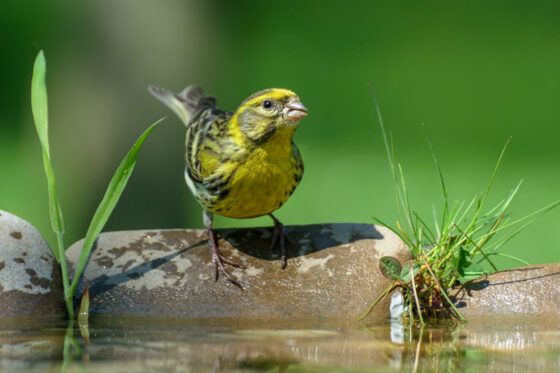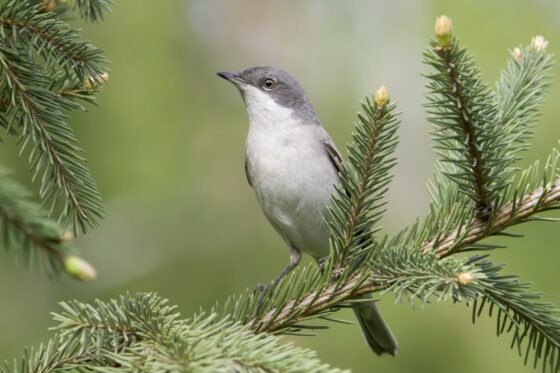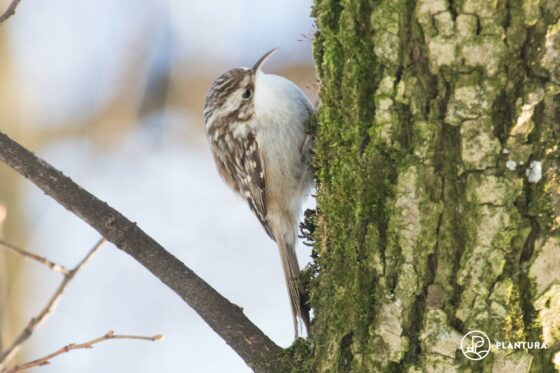There’s no mistaking a robin… or so you might think. Can you tell a young robin apart from a tit? Here’s everything you need to know about one of the most famous birds around.
The robin’s red breast is its most distinctive feature Despite its size, the robin (Erithacus rubecula ) is an adventurous little songbird. While other birds fly away at the slightest of movements, a robin will remain calm and collected even just a few metres from you. With its rust-red chest, robins are unmistakable and a common garden visitor. In winter, the portly birds puff out their feathers even more, forming a layer of insulation against the cold.
Robin: key facts Size About 14cm Weight About 20g Breeding season March-July Lifespan Approximately 3-5 years Habitat Forests, parks and gardens Food preferences Soil living insects and their larvae, as well as berries and fruits Threats Nest robbers and food shortages in winter
How to recognise the robin The robin is a small, round songbird. Its back and wings are olive-brown, and its stomach is a considerably lighter grey-white. The famous rust-red colour saturates not only the robin’s breast, but climbs over its beak to the eyes. With such a distinctive feature, robins are hard to miss. And that’s not to mention their strikingly large, black eyes, which provide just enough light to see at dusk.
The robin’s distinctive, bright red chest How to recognise a young robin Without the rust-red chest, young robins are far less distinctive than their parents. Their brown plumage is streaked with golden yellow speckles and only their light-coloured belly harks to what will soon be the famous red chest.
Young robins are somewhat inconspicuous [Photo: Ihor Hvozdetskyi/ Shutterstock.com] How to recognise a robin egg Robins produce four to seven eggs per clutch. Each egg is about two centimetres in size, white-yellow, and speckled with red-brown spots.
The robin lays up to seven eggs per brood [Photo: Stphanie CROCQ/ Shutterstock.com] How to tell the difference between male and female robins It is difficult to distinguish male robins from females at first glance. The grey border that surrounds a robin’s red chest is wider in males than females, but this changes with age, so is a tough spot without experience.
Since females rarely sing, one of the more obvious ways to distinguish males from females – at least during breeding season – is to notice which bird is singing.
What is the perfect habitat for robins? Robins prefer breeding near water, in deciduous, mixed or coniferous forests, as well as in man-made parks and gardens. Since they look for food mainly on the ground, areas with a little undergrowth are best.
Where do robins build their nests? Robins build their nests near the ground. In forests, they use the undergrowth and natural hollows. In parks and gardens, they are more likely to use hedges, brushwood heaps or even wood stacks. The bowl-shaped nest is made of moss and grass, and padded with animal hair or feathers.
Moss is a popular nesting material for robins [Photo: Nimur/ Shutterstock.com] When is the breeding season of robins? Robins breed from March to July, raising up to 3 clutches. The female incubates her eggs for about 14 days, while her partner supplies her with food. After hatching, the young are fed in the nest for another 14 days. This is a dangerous time for the young hatchlings. Since the nest is so close to the ground, they are susceptible to nest robbers like cats and magpies . And it’s precisely because of this danger, that robins will often begin building their second nest before the first brood is fully independent.
Where do robins spend the winter? Robins don’t migrate during winter. Instead, males defend their territory year-round, which is why you will hear their singing in the colder months. A peculiarity of the robin, is that the females stick around as well, mostly looking for and gathering food. In spring, robins reunite with their partners and enjoy the warmer months together.
What does a robin’s song sound like? A robin’s song begins with a few high-pitched, clear tones. These are promptly followed by a faster, chirping verse that is somewhat melancholy. A robin’s call, usually heard at dusk, is also characteristic, and sounds like a fast ticking clock: “Tick-tick-tick-tick-tick-tick”.
Help the robin! There are several ways to make it easier for robins to settle in your garden. Especially in winter, garden birds often need additional support because their natural food supply is insufficient.
What do robins eat? Robins prefer to search the ground for small insects and their larvae, but are partial to berries and fruits. You can also offer them soft food in the form of oat flakes, raisins and apples. If you want to know more about the food preferences of different garden birds, have a look at our article “Make your own bird food “.
In winter, robins enjoy soft food [Photo: David James Chatterton/ Shutterstock.com] Which birdhouses are suitable for robins? Robins are happy to use bird boxes, but they do prefer large entrances–about 10 centimetres high. Spotted flycatchers , wagtails and wrens will also make use of a birdhouse with such a large opening. You can find more tips on the materials and dimensions for your birdhouse, and how best to clean it in our article on building your own bird box .
How can I support robins even more? Since robins prefer to search for insects in the undergrowth, a healthy ground fauna is essential.
Robins are real water lovers; often found near bodies of water and in humid places. If you don’t want to install a pond in your garden right away, however, set out a bird bath. Your garden robins will be happy for it and are sure to splash around in the warmer months.
Tip : A bird bath is also a place for birds to drink. All garden birds, such as blackbirds and great tits , will be happy for the water, especially in the warmer months.
Subscribe to the Plantura newsletter ...and receive exciting gardening tips, special offers and a 10% discount on your next purchase in the
Plantura shop !
{ "products": [ { "name": "All Purpose Plant Food, 1.5kg", "unitPrice" : "Base price: £6.66/kg", "compareAtPriceString": "£12.99", "priceString": "£9.99", "compareAtPrice": 12.99, "price": 9.99, "sale":false, "percentage":"23%", "badge": "angebot", "url": "https://www.uk.plantura.garden/products/all-purpose-plant-food-1-5-kg", "available": true, "availabilityInfo":"", "campaignInfo":"","isSet": false, "priceLabel": "", "compareAtPriceLabel": "","reviewsData":{"reviewCount": 4, "reviewAverageValue": 4.8},"image": "https://www.uk.plantura.garden/cdn/shop/products/plantura-all-purpose-plant-food_1100x.jpg?v=1656335807","tags": "angebot,berries,box tree,cherry laurel,fig tree,Flowers,garlic,granular fertiliser,Hedges & Shrubs,Herbs,Houseplants,lavender,lettuce,oleander,palm tree,palm trees,pampas gras,plant fertiliser,slow release fertiliser,Vegetables","bulletPoints": ["Perfect for a variety of plants in the garden \u0026 on the balcony","Promotes healthy plant growth \u0026 an active soil life","Long-lasting fertiliser that is free from animal products - child \u0026 pet friendly"],"variants" : [ {"sku": "GF-APPF-A03K","available": true, "compareAtPriceString": "£12.99", "priceString": "£9.99", "compareAtPrice": 12.99, "price": 9.99, "sale":true, "percentage":"23%", "priceCurrency" : "GBP", "url" : "https://www.uk.plantura.garden/products/all-purpose-plant-food-1-5-kg?variant=37777826840739","isSet":false}, {"sku": "GF-APPF-3KG1","available": true, "compareAtPriceString": "£25.98", "priceString": "£19.49", "compareAtPrice": 25.98, "price": 19.49, "sale":true, "percentage":"25%", "priceCurrency" : "GBP", "url" : "https://www.uk.plantura.garden/products/all-purpose-plant-food-1-5-kg?variant=37777826873507","isSet":true }, {"sku": "GF-APPF-A06K","available": true, "compareAtPriceString": "£51.96", "priceString": "£37.99", "compareAtPrice": 51.96, "price": 37.99, "sale":true, "percentage":"27%", "priceCurrency" : "GBP", "url" : "https://www.uk.plantura.garden/products/all-purpose-plant-food-1-5-kg?variant=37777826906275","isSet":true }, {"sku": "GF-APPF-A12K","available": false, "compareAtPriceString": "£103.92", "priceString": "£69.99", "compareAtPrice": 103.92, "price": 69.99, "sale":true, "percentage":"33%", "priceCurrency" : "GBP", "url" : "https://www.uk.plantura.garden/products/all-purpose-plant-food-1-5-kg?variant=37777826939043","isSet":true }], "handle" : "all-purpose-plant-food-1-5-kg"}, { "name": "Autumn Lawn Feed 10.5kg, 200m2 coverage", "unitPrice" : "Base price: £2.86/kg", "compareAtPriceString": "", "priceString": "£29.99", "compareAtPrice": 0.0, "price": 29.99, "sale":false, "percentage":"", "badge": "angebot", "url": "https://www.uk.plantura.garden/products/autumn-lawn-feed-10-5-kg", "available": true, "availabilityInfo":"", "campaignInfo":"","isSet": false, "priceLabel": "", "compareAtPriceLabel": "","reviewsData":{"reviewCount": 11, "reviewAverageValue": 4.4},"image": "https://www.uk.plantura.garden/cdn/shop/products/autumn-lawn-feed-10-5kg-plantura_1100x.jpg?v=1657620622","tags": "autumn,autumn fertiliser,granular fertiliser,Lawn,lawn care,plant fertiliser,potassium,slow release fertiliser,soil,spreader,turf,vinasse","bulletPoints": ["Perfect for fertilising lawns from July to October","Promotes a winter-hardy lawn \u0026 fast regeneration in spring","Long-lasting fertiliser that is free from animal products - child \u0026 pet friendly"],"variants" : [ {"sku": "GF-PALF-105K","available": true, "compareAtPriceString": "", "priceString": "£29.99", "compareAtPrice": 0.0, "price": 29.99, "sale":false, "percentage":"", "priceCurrency" : "GBP", "url" : "https://www.uk.plantura.garden/products/autumn-lawn-feed-10-5-kg?variant=37777824219299","isSet":false}, {"sku": "GF-PALF-21KG","available": true, "compareAtPriceString": "£59.98", "priceString": "£56.99", "compareAtPrice": 59.98, "price": 56.99, "sale":true, "percentage":"5%", "priceCurrency" : "GBP", "url" : "https://www.uk.plantura.garden/products/autumn-lawn-feed-10-5-kg?variant=37777824252067","isSet":true }, {"sku": "GF-PALF-42KG","available": true, "compareAtPriceString": "£119.96", "priceString": "£110.99", "compareAtPrice": 119.96, "price": 110.99, "sale":true, "percentage":"7%", "priceCurrency" : "GBP", "url" : "https://www.uk.plantura.garden/products/autumn-lawn-feed-10-5-kg?variant=37777824284835","isSet":true }], "handle" : "autumn-lawn-feed-10-5-kg"}, { "name": "Autumn Lawn Feed 3kg, 60m2 coverage", "unitPrice" : "", "compareAtPriceString": "", "priceString": "£14.99", "compareAtPrice": 0.0, "price": 14.99, "sale":false, "percentage":"", "badge": "angebot", "url": "https://www.uk.plantura.garden/products/autumn-lawn-feed-3-kg", "available": false, "availabilityInfo":"", "campaignInfo":"","isSet": false, "priceLabel": "", "compareAtPriceLabel": "","reviewsData":{"reviewCount": 8, "reviewAverageValue": 4.9},"image": "https://www.uk.plantura.garden/cdn/shop/products/autumn-lawn-feed-3kg-plantura_1100x.jpg?v=1657615883","tags": "autumn,autumn fertiliser,discount,granular fertiliser,Lawn,lawn care,plant fertiliser,potassium,sale,slow release fertiliser,soil,spreader,turf,vinasse","bulletPoints": ["Perfect for fertilising lawns from July to October","Promotes a winter-hardy lawn \u0026 fast regeneration in spring","Long-lasting fertiliser that is free from animal products - child \u0026 pet friendly"],"variants" : [ {"sku": "GF-PALF-A03K","available": false, "compareAtPriceString": "", "priceString": "£14.99", "compareAtPrice": 0.0, "price": 14.99, "sale":false, "percentage":"", "priceCurrency" : "GBP", "url" : "https://www.uk.plantura.garden/products/autumn-lawn-feed-3-kg?variant=37777828282531","isSet":false}, {"sku": "GF-PALF-A06K","available": false, "compareAtPriceString": "£29.98", "priceString": "£27.99", "compareAtPrice": 29.98, "price": 27.99, "sale":true, "percentage":"7%", "priceCurrency" : "GBP", "url" : "https://www.uk.plantura.garden/products/autumn-lawn-feed-3-kg?variant=37777828315299","isSet":true }], "handle" : "autumn-lawn-feed-3-kg"}, { "name": "Box Tree Moth Trap", "unitPrice" : "", "compareAtPriceString": "", "priceString": "£24.99", "compareAtPrice": 0.0, "price": 24.99, "sale":false, "percentage":"", "badge": "angebot", "url": "https://www.uk.plantura.garden/products/box-tree-moth-trap", "available": false, "availabilityInfo":"", "campaignInfo":"","isSet": false, "priceLabel": "", "compareAtPriceLabel": "","reviewsData":{"reviewCount": 3, "reviewAverageValue": 5.0},"image": "https://www.uk.plantura.garden/cdn/shop/products/box-tree-moth-trap-plantura_1100x.jpg?v=1657530999","tags": "box tree,box tree caterpillar,Box Tree Moth,pheromone trap","bulletPoints": ["Reusable pheromone trap for monitoring box tree moth activity","For the early detection of infestations - covers an area of up to 180m\u003csub\u003e2\u003c\/sub\u003e","100% insecticide-free - not harmful to humans or pets"],"variants" : [ {"sku": "MT-BTMT-RT01","available": false, "compareAtPriceString": "", "priceString": "£24.99", "compareAtPrice": 0.0, "price": 24.99, "sale":false, "percentage":"", "priceCurrency" : "GBP", "url" : "https://www.uk.plantura.garden/products/box-tree-moth-trap?variant=41520312058019","isSet":false}], "handle" : "box-tree-moth-trap"}, { "name": "Box Tree Moth Trap Refill 6 dispensers", "unitPrice" : "", "compareAtPriceString": "", "priceString": "£7.49", "compareAtPrice": 0.0, "price": 7.49, "sale":false, "percentage":"", "badge": "angebot", "url": "https://www.uk.plantura.garden/products/box-tree-moth-trap-refill", "available": true, "availabilityInfo":"", "campaignInfo":"","isSet": false, "priceLabel": "", "compareAtPriceLabel": "","reviewsData":{"reviewCount": 2, "reviewAverageValue": 2.5},"image": "https://www.uk.plantura.garden/cdn/shop/products/box-tree-moth-trap-refill-plantura_1100x.jpg?v=1657531158","tags": "box tree,box tree caterpillar,Box Tree Moth,pheromone trap","bulletPoints": ["6 dispensers for refilling our reusable Plantura Box Tree Moth Trap","Pheromone dispenser for attracting male box tree moths","100% insecticide free - not harmful to humans or pets"],"variants" : [ {"sku": "MT-BTMT-RD06","available": true, "compareAtPriceString": "", "priceString": "£7.49", "compareAtPrice": 0.0, "price": 7.49, "sale":false, "percentage":"", "priceCurrency" : "GBP", "url" : "https://www.uk.plantura.garden/products/box-tree-moth-trap-refill?variant=41520321429667","isSet":false}], "handle" : "box-tree-moth-trap-refill"}, { "name": "Clothes Moth Traps 6-pack", "unitPrice" : "", "compareAtPriceString": "", "priceString": "£9.99", "compareAtPrice": 0.0, "price": 9.99, "sale":false, "percentage":"", "badge": "angebot", "url": "https://www.uk.plantura.garden/products/clothes-moth-traps", "available": false, "availabilityInfo":"", "campaignInfo":"","isSet": false, "priceLabel": "", "compareAtPriceLabel": "","reviewsData":{"reviewCount": 7, "reviewAverageValue": 5.0},"image": "https://www.uk.plantura.garden/cdn/shop/products/clothes-moth-traps-plantura_1100x.jpg?v=1657532784","tags": "carpet moths,carpet moths traps,clothes moth traps,clothes moths,clothes moths pheromone traps,moth traps,pheromone traps,sticky traps","bulletPoints": ["6 odourless, long-lasting clothes moth traps ","Ideal for detecting infestations in wardrobes \u0026 storage rooms early on","100% insecticide-free \u0026 non-toxic"],"variants" : [ {"sku": "MT-CMT1-TW06","available": false, "compareAtPriceString": "", "priceString": "£9.99", "compareAtPrice": 0.0, "price": 9.99, "sale":false, "percentage":"", "priceCurrency" : "GBP", "url" : "https://www.uk.plantura.garden/products/clothes-moth-traps?variant=42646008299683","isSet":false}], "handle" : "clothes-moth-traps"}, { "name": "Drought-Resistant Lawn Seed, 2kg, 80m2 coverage", "unitPrice" : "Base price: £12.50/kg", "compareAtPriceString": "£29.99", "priceString": "£24.99", "compareAtPrice": 29.99, "price": 24.99, "sale":false, "percentage":"17%", "badge": "angebot", "url": "https://www.uk.plantura.garden/products/drought-resistant-lawn-seed-2-kg", "available": true, "availabilityInfo":"", "campaignInfo":"","isSet": false, "priceLabel": "", "compareAtPriceLabel": "","reviewsData":{"reviewCount": 2, "reviewAverageValue": 4.5},"image": "https://www.uk.plantura.garden/cdn/shop/products/drought-resistant-lawn-seed-plantura_1100x.jpg?v=1657716694","tags": "angebot,grass seed,grasses,Lawn,lawn seed,meadow,New Lawn,rsm,seed,seeds,soil,sowing,spreader","bulletPoints": ["Perfect for regions with hot \u0026 dry summers","Saves water with heat-tolerant \u0026 deep-rooted grasses","Premium lawn seed mixture with high-quality, certified grass varieties"],"variants" : [ {"sku": "LS-PDRL-02KG","available": true, "compareAtPriceString": "£29.99", "priceString": "£24.99", "compareAtPrice": 29.99, "price": 24.99, "sale":true, "percentage":"17%", "priceCurrency" : "GBP", "url" : "https://www.uk.plantura.garden/products/drought-resistant-lawn-seed-2-kg?variant=37777803018403","isSet":false}, {"sku": "LS-PDRL-04KG","available": true, "compareAtPriceString": "£59.98", "priceString": "£44.99", "compareAtPrice": 59.98, "price": 44.99, "sale":true, "percentage":"25%", "priceCurrency" : "GBP", "url" : "https://www.uk.plantura.garden/products/drought-resistant-lawn-seed-2-kg?variant=37777803051171","isSet":true }, {"sku": "LS-PDRL-10KG","available": true, "compareAtPriceString": "£149.95", "priceString": "£99.99", "compareAtPrice": 149.95, "price": 99.99, "sale":true, "percentage":"33%", "priceCurrency" : "GBP", "url" : "https://www.uk.plantura.garden/products/drought-resistant-lawn-seed-2-kg?variant=37777803116707","isSet":true }], "handle" : "drought-resistant-lawn-seed-2-kg"}, { "name": "Flower Food, 1.5kg", "unitPrice" : "Base price: £6.66/kg", "compareAtPriceString": "£12.99", "priceString": "£9.99", "compareAtPrice": 12.99, "price": 9.99, "sale":false, "percentage":"23%", "badge": "angebot", "url": "https://www.uk.plantura.garden/products/flower-food-1-5-kg", "available": true, "availabilityInfo":"", "campaignInfo":"","isSet": false, "priceLabel": "", "compareAtPriceLabel": "","reviewsData":null,"image": "https://www.uk.plantura.garden/cdn/shop/products/plantura-flower-food_1100x.jpg?v=1656336129","tags": "angebot,clematis,flowering plants,Flowers,fuchsia,garden flowers,geranium,granular fertiliser,hibiscus,lily,oleander,passion flower,peony,petunia,plant fertiliser,slow release fertiliser,vinasse","bulletPoints": ["Perfect for flowering plants in the garden \u0026 on the balcony","For healthier plants with beautiful \u0026 long-lasting blossoms","Long-lasting fertiliser that is free from animal products - child \u0026 pet friendly"],"variants" : [ {"sku": "GF-PFF1-F15K","available": true, "compareAtPriceString": "£12.99", "priceString": "£9.99", "compareAtPrice": 12.99, "price": 9.99, "sale":true, "percentage":"23%", "priceCurrency" : "GBP", "url" : "https://www.uk.plantura.garden/products/flower-food-1-5-kg?variant=37777827528867","isSet":false}, {"sku": "GF-PFF1-F03K","available": true, "compareAtPriceString": "£25.98", "priceString": "£19.49", "compareAtPrice": 25.98, "price": 19.49, "sale":true, "percentage":"25%", "priceCurrency" : "GBP", "url" : "https://www.uk.plantura.garden/products/flower-food-1-5-kg?variant=37777827561635","isSet":true }, {"sku": "GF-PFF1-F06K","available": true, "compareAtPriceString": "£51.96", "priceString": "£37.99", "compareAtPrice": 51.96, "price": 37.99, "sale":true, "percentage":"27%", "priceCurrency" : "GBP", "url" : "https://www.uk.plantura.garden/products/flower-food-1-5-kg?variant=37777827627171","isSet":true }, {"sku": "GF-PFF1-F12K","available": true, "compareAtPriceString": "£103.92", "priceString": "£69.99", "compareAtPrice": 103.92, "price": 69.99, "sale":true, "percentage":"33%", "priceCurrency" : "GBP", "url" : "https://www.uk.plantura.garden/products/flower-food-1-5-kg?variant=37777827659939","isSet":true }], "handle" : "flower-food-1-5-kg"}, { "name": "Hard-Wearing Lawn Seed, 2kg, 100m2 coverage", "unitPrice" : "Base price: £10.00/kg", "compareAtPriceString": "£25.99", "priceString": "£19.99", "compareAtPrice": 25.99, "price": 19.99, "sale":false, "percentage":"23%", "badge": "angebot", "url": "https://www.uk.plantura.garden/products/hard-wearing-lawn-seed-2-kg", "available": true, "availabilityInfo":"", "campaignInfo":"","isSet": false, "priceLabel": "", "compareAtPriceLabel": "","reviewsData":{"reviewCount": 1, "reviewAverageValue": 5.0},"image": "https://www.uk.plantura.garden/cdn/shop/products/hard-wearing-lawn-seed-plantura_1100x.jpg?v=1657796876","tags": "angebot,children,grass seed,grasses,Lawn,lawn seed,meadow,New Lawn,rsm,seed,seeds,soil,sowing,sports turf,spreader,tough lawn","bulletPoints": ["Creates particularly strong \u0026 durable lawns","Contains regenerative lawn seeds for thick turf","Premium lawn seed mixture with high-quality, certified grass varieties"],"variants" : [ {"sku": "LS-PHWL-02KG","available": true, "compareAtPriceString": "£25.99", "priceString": "£19.99", "compareAtPrice": 25.99, "price": 19.99, "sale":true, "percentage":"23%", "priceCurrency" : "GBP", "url" : "https://www.uk.plantura.garden/products/hard-wearing-lawn-seed-2-kg?variant=37777804951715","isSet":false}, {"sku": "LS-PHWL-04KG","available": true, "compareAtPriceString": "£51.98", "priceString": "£37.99", "compareAtPrice": 51.98, "price": 37.99, "sale":true, "percentage":"27%", "priceCurrency" : "GBP", "url" : "https://www.uk.plantura.garden/products/hard-wearing-lawn-seed-2-kg?variant=37777804984483","isSet":true }, {"sku": "LS-PHWL-10KG","available": true, "compareAtPriceString": "£129.95", "priceString": "£79.99", "compareAtPrice": 129.95, "price": 79.99, "sale":true, "percentage":"38%", "priceCurrency" : "GBP", "url" : "https://www.uk.plantura.garden/products/hard-wearing-lawn-seed-2-kg?variant=37777805017251","isSet":true }], "handle" : "hard-wearing-lawn-seed-2-kg"}, { "name": "Hydrangea Food, 1.5kg", "unitPrice" : "Base price: £8.66/kg", "compareAtPriceString": "", "priceString": "£12.99", "compareAtPrice": 0.0, "price": 12.99, "sale":false, "percentage":"", "badge": "angebot", "url": "https://www.uk.plantura.garden/products/hydrangea-food-1-5-kg", "available": true, "availabilityInfo":"", "campaignInfo":"","isSet": false, "priceLabel": "", "compareAtPriceLabel": "","reviewsData":{"reviewCount": 5, "reviewAverageValue": 5.0},"image": "https://www.uk.plantura.garden/cdn/shop/products/plantura-hydrangea-food_1100x.jpg?v=1656337945","tags": "azalea,ericaceous fertiliser,Flowers,granular fertiliser,hydrangea arborescens,hydrangea macrophylla,hydrangea paniculata,hydrangea petiolaris,hydrangea serrata,Hydrangeas,plant fertiliser,rhododendron,slow release fertiliser,vinasse","bulletPoints": ["For beautiful hydrangeas with lush blooms in pots \u0026 flower beds","Prevents common deficiency symptoms \u0026 supports healthy plant growth","Long-lasting fertiliser that is free from animal products - child \u0026 pet friendly"],"variants" : [ {"sku": "GF-PHF1-H15K","available": true, "compareAtPriceString": "", "priceString": "£12.99", "compareAtPrice": 0.0, "price": 12.99, "sale":false, "percentage":"", "priceCurrency" : "GBP", "url" : "https://www.uk.plantura.garden/products/hydrangea-food-1-5-kg?variant=37777820614819","isSet":false}, {"sku": "GF-PHF1-H03K","available": true, "compareAtPriceString": "£25.98", "priceString": "£24.99", "compareAtPrice": 25.98, "price": 24.99, "sale":true, "percentage":"4%", "priceCurrency" : "GBP", "url" : "https://www.uk.plantura.garden/products/hydrangea-food-1-5-kg?variant=37777820647587","isSet":true }, {"sku": "GF-PHF1-H06K","available": true, "compareAtPriceString": "£51.96", "priceString": "£47.99", "compareAtPrice": 51.96, "price": 47.99, "sale":true, "percentage":"8%", "priceCurrency" : "GBP", "url" : "https://www.uk.plantura.garden/products/hydrangea-food-1-5-kg?variant=37777820680355","isSet":true }, {"sku": "GF-PHF1-H12K","available": true, "compareAtPriceString": "£103.92", "priceString": "£93.99", "compareAtPrice": 103.92, "price": 93.99, "sale":true, "percentage":"10%", "priceCurrency" : "GBP", "url" : "https://www.uk.plantura.garden/products/hydrangea-food-1-5-kg?variant=37777820713123","isSet":true }], "handle" : "hydrangea-food-1-5-kg"}, { "name": "Lawn Feed 10.5kg, 250m2 coverage", "unitPrice" : "Base price: £2.28/kg", "compareAtPriceString": "£29.99", "priceString": "£23.99", "compareAtPrice": 29.99, "price": 23.99, "sale":false, "percentage":"20%", "badge": "angebot", "url": "https://www.uk.plantura.garden/products/lawn-feed-10-5-kg", "available": true, "availabilityInfo":"", "campaignInfo":"","isSet": false, "priceLabel": "", "compareAtPriceLabel": "","reviewsData":{"reviewCount": 4, "reviewAverageValue": 5.0},"image": "https://www.uk.plantura.garden/cdn/shop/products/lawn-feed-10-5kg-plantura_1100x.jpg?v=1657613812","tags": "angebot,granular fertiliser,Lawn,lawn care,nitrogen fertiliser,plant fertiliser,Rasendünger,Rasenrelevant (ohne Herbstrasen),slow release fertiliser,soil,spreader,turf,vinasse","bulletPoints": ["Perfect for a healthy \u0026 lush green lawn without moss","Supports your lawn with all the nutrients it needs in spring \u0026 summer","Long-lasting fertiliser that is free from animal products - child \u0026 pet friendly"],"variants" : [ {"sku": "GF-PLF3-105K","available": true, "compareAtPriceString": "£29.99", "priceString": "£23.99", "compareAtPrice": 29.99, "price": 23.99, "sale":true, "percentage":"20%", "priceCurrency" : "GBP", "url" : "https://www.uk.plantura.garden/products/lawn-feed-10-5-kg?variant=37777822941347","isSet":false}, {"sku": "GF-PLF3-21KG","available": true, "compareAtPriceString": "£59.98", "priceString": "£44.99", "compareAtPrice": 59.98, "price": 44.99, "sale":true, "percentage":"25%", "priceCurrency" : "GBP", "url" : "https://www.uk.plantura.garden/products/lawn-feed-10-5-kg?variant=37777823006883","isSet":true }, {"sku": "GF-PLF3-42KG","available": true, "compareAtPriceString": "£119.96", "priceString": "£79.99", "compareAtPrice": 119.96, "price": 79.99, "sale":true, "percentage":"33%", "priceCurrency" : "GBP", "url" : "https://www.uk.plantura.garden/products/lawn-feed-10-5-kg?variant=37777823039651","isSet":true }], "handle" : "lawn-feed-10-5-kg"}, { "name": "Lawn Feed 3kg, 70m2 coverage", "unitPrice" : "Base price: £3.00/kg", "compareAtPriceString": "£14.99", "priceString": "£8.99", "compareAtPrice": 14.99, "price": 8.99, "sale":false, "percentage":"40%", "badge": "angebot", "url": "https://www.uk.plantura.garden/products/lawn-feed-3-kg", "available": true, "availabilityInfo":"", "campaignInfo":"","isSet": false, "priceLabel": "", "compareAtPriceLabel": "","reviewsData":{"reviewCount": 2, "reviewAverageValue": 5.0},"image": "https://www.uk.plantura.garden/cdn/shop/products/lawn-feed-3kg-plantura_1100x.jpg?v=1657612205","tags": "angebot,granular fertiliser,Lawn,lawn care,nitrogen fertiliser,plant fertiliser,Rasenrelevant (ohne Herbstrasen),slow release fertiliser,soil,spreader,turf,vinasse","bulletPoints": ["Perfect for a healthy \u0026 lush green lawn without moss","Supports your lawn with all the nutrients it needs in spring \u0026 summer","Long-lasting fertiliser that is free from animal products - child \u0026 pet friendly"],"variants" : [ {"sku": "GF-PLF1-L03K","available": true, "compareAtPriceString": "£14.99", "priceString": "£8.99", "compareAtPrice": 14.99, "price": 8.99, "sale":true, "percentage":"40%", "priceCurrency" : "GBP", "url" : "https://www.uk.plantura.garden/products/lawn-feed-3-kg?variant=37777828905123","isSet":false}, {"sku": "GF-PLF1-L06K","available": true, "compareAtPriceString": "£29.98", "priceString": "£16.99", "compareAtPrice": 29.98, "price": 16.99, "sale":true, "percentage":"43%", "priceCurrency" : "GBP", "url" : "https://www.uk.plantura.garden/products/lawn-feed-3-kg?variant=37777828937891","isSet":true }], "handle" : "lawn-feed-3-kg"}, { "name": "Lawn Overseeding Mix, 2kg, 100m2", "unitPrice" : "Base price: £10.00/kg", "compareAtPriceString": "£25.99", "priceString": "£19.99", "compareAtPrice": 25.99, "price": 19.99, "sale":false, "percentage":"23%", "badge": "angebot", "url": "https://www.uk.plantura.garden/products/lawn-overseeding-mix-2-kg", "available": true, "availabilityInfo":"", "campaignInfo":"","isSet": false, "priceLabel": "", "compareAtPriceLabel": "","reviewsData":{"reviewCount": 9, "reviewAverageValue": 4.9},"image": "https://www.uk.plantura.garden/cdn/shop/products/lawn-overseeding-mix-2-kg-plantura_1100x.jpg?v=1657627004","tags": "angebot,grass seed,grasses,Lawn,lawn care,lawn seed,meadow,repair,reseeding,rsm,seed,seeds,soil,spreader,Thin Lawn","bulletPoints": ["Perfect for fixing thinning \u0026 weedy lawns","Repairs lawns quickly \u0026 reliably - for lush green grass","High-quality, certified grass varieties \u0026 coated seeds"],"variants" : [ {"sku": "LS-PLOM-02KG","available": true, "compareAtPriceString": "£25.99", "priceString": "£19.99", "compareAtPrice": 25.99, "price": 19.99, "sale":true, "percentage":"23%", "priceCurrency" : "GBP", "url" : "https://www.uk.plantura.garden/products/lawn-overseeding-mix-2-kg?variant=37777799938211","isSet":false}, {"sku": "LS-PLOM-04KG","available": true, "compareAtPriceString": "£51.98", "priceString": "£37.99", "compareAtPrice": 51.98, "price": 37.99, "sale":true, "percentage":"27%", "priceCurrency" : "GBP", "url" : "https://www.uk.plantura.garden/products/lawn-overseeding-mix-2-kg?variant=37777799970979","isSet":true }, {"sku": "LS-PLOM-10KG","available": true, "compareAtPriceString": "£129.95", "priceString": "£79.99", "compareAtPrice": 129.95, "price": 79.99, "sale":true, "percentage":"38%", "priceCurrency" : "GBP", "url" : "https://www.uk.plantura.garden/products/lawn-overseeding-mix-2-kg?variant=37777800003747","isSet":true }], "handle" : "lawn-overseeding-mix-2-kg"}, { "name": "Lawn Overseeding Mix,1kg, 50m2", "unitPrice" : "Base price: £16.99/kg", "compareAtPriceString": "", "priceString": "£16.99", "compareAtPrice": 0.0, "price": 16.99, "sale":false, "percentage":"", "badge": "angebot", "url": "https://www.uk.plantura.garden/products/lawn-overseeding-mix-1kg", "available": true, "availabilityInfo":"", "campaignInfo":"","isSet": false, "priceLabel": "", "compareAtPriceLabel": "","reviewsData":{"reviewCount": 1, "reviewAverageValue": 5.0},"image": "https://www.uk.plantura.garden/cdn/shop/products/lawn-overseeding-mix-1-kg-plantura_1200x.jpg?v=1657702293","tags": "grass seed,grasses,Lawn,lawn care,lawn seed,meadow,repair,reseeding,rsm,seed,seeds,soil,spreader,Thin Lawn","bulletPoints": ["Perfect for fixing thinning \u0026 weedy lawns","Repairs lawns quickly \u0026 reliably - for lush green grass","High-quality, certified grass varieties \u0026 coated seeds"],"variants" : [ {"sku": "LS-PLOM-01KG","available": true, "compareAtPriceString": "", "priceString": "£16.99", "compareAtPrice": 0.0, "price": 16.99, "sale":false, "percentage":"", "priceCurrency" : "GBP", "url" : "https://www.uk.plantura.garden/products/lawn-overseeding-mix-1kg?variant=37777801412771","isSet":false}], "handle" : "lawn-overseeding-mix-1kg"}, { "name": "Lawn Repair Mix, 1.5kg, 10m2 coverage", "unitPrice" : "Base price: £8.66/kg", "compareAtPriceString": "£16.99", "priceString": "£12.99", "compareAtPrice": 16.99, "price": 12.99, "sale":false, "percentage":"24%", "badge": "angebot", "url": "https://www.uk.plantura.garden/products/lawn-repair-mix-1-5-kg", "available": true, "availabilityInfo":"", "campaignInfo":"","isSet": false, "priceLabel": "", "compareAtPriceLabel": "","reviewsData":{"reviewCount": 5, "reviewAverageValue": 4.8},"image": "https://www.uk.plantura.garden/cdn/shop/products/lawn-repair-mix-plantura_1100x.jpg?v=1657877879","tags": "angebot,grass seed,grasses,Lawn,lawn care,lawn seed,meadow,overseeding,patchy grass,Patchy Lawn,reseeding,rsm,seed,seeds,soil,spreader","bulletPoints": ["Repairs patches in the lawn quickly \u0026 reliably","With fertiliser and lime for a greener \u0026 thicker lawn","Premium lawn seed mixture with high-quality, certified grass varieties"],"variants" : [ {"sku": "LS-PLRM-015G","available": true, "compareAtPriceString": "£16.99", "priceString": "£12.99", "compareAtPrice": 16.99, "price": 12.99, "sale":true, "percentage":"24%", "priceCurrency" : "GBP", "url" : "https://www.uk.plantura.garden/products/lawn-repair-mix-1-5-kg?variant=37777802002595","isSet":false}, {"sku": "LS-PLRM-03KG","available": true, "compareAtPriceString": "£33.98", "priceString": "£24.99", "compareAtPrice": 33.98, "price": 24.99, "sale":true, "percentage":"26%", "priceCurrency" : "GBP", "url" : "https://www.uk.plantura.garden/products/lawn-repair-mix-1-5-kg?variant=37777802035363","isSet":true }, {"sku": "LS-PLRM-06KG","available": true, "compareAtPriceString": "£67.96", "priceString": "£44.99", "compareAtPrice": 67.96, "price": 44.99, "sale":true, "percentage":"34%", "priceCurrency" : "GBP", "url" : "https://www.uk.plantura.garden/products/lawn-repair-mix-1-5-kg?variant=37777802068131","isSet":true }], "handle" : "lawn-repair-mix-1-5-kg"}, { "name": "Liquid Citrus Food, 800ml", "unitPrice" : "", "compareAtPriceString": "", "priceString": "£10.99", "compareAtPrice": 0.0, "price": 10.99, "sale":false, "percentage":"", "badge": "angebot", "url": "https://www.uk.plantura.garden/products/liquid-citrus-food-800-ml", "available": false, "availabilityInfo":"", "campaignInfo":"","isSet": false, "priceLabel": "", "compareAtPriceLabel": "","reviewsData":{"reviewCount": 8, "reviewAverageValue": 4.9},"image": "https://www.uk.plantura.garden/cdn/shop/products/liquid-citrus-food-plantura_1100x.jpg?v=1657542983","tags": "citrus plants,CitrusMediterraneanplants,clementine,fig,grapefruit,kumquat,lemon,lemon tree,lime,liquid fertiliser,mandarin,mediterranean plants,olive,olive tree,orange,palm tree,palm tree fertiliser,plant fertiliser,vinasse","bulletPoints": ["Perfect for all citrus plants \u0026 Mediterranean plants","Liquid fertiliser for healthy plants \u0026 aromatic fruit","Quick \u0026 easy application - child \u0026 pet friendly"],"variants" : [ {"sku": "LF-LCF1-C80M","available": false, "compareAtPriceString": "", "priceString": "£10.99", "compareAtPrice": 0.0, "price": 10.99, "sale":false, "percentage":"", "priceCurrency" : "GBP", "url" : "https://www.uk.plantura.garden/products/liquid-citrus-food-800-ml?variant=37777795973283","isSet":false}, {"sku": "LF-LCF1-C16L","available": false, "compareAtPriceString": "£21.98", "priceString": "£20.99", "compareAtPrice": 21.98, "price": 20.99, "sale":true, "percentage":"5%", "priceCurrency" : "GBP", "url" : "https://www.uk.plantura.garden/products/liquid-citrus-food-800-ml?variant=37777796006051","isSet":true }, {"sku": "LF-LCF1-C32L","available": false, "compareAtPriceString": "£43.96", "priceString": "£40.99", "compareAtPrice": 43.96, "price": 40.99, "sale":true, "percentage":"7%", "priceCurrency" : "GBP", "url" : "https://www.uk.plantura.garden/products/liquid-citrus-food-800-ml?variant=37777796038819","isSet":true }, {"sku": "LF-LCF1-C96L","available": false, "compareAtPriceString": "£131.88", "priceString": "£119.99", "compareAtPrice": 131.88, "price": 119.99, "sale":true, "percentage":"9%", "priceCurrency" : "GBP", "url" : "https://www.uk.plantura.garden/products/liquid-citrus-food-800-ml?variant=37777796071587","isSet":true }], "handle" : "liquid-citrus-food-800-ml"}, { "name": "Liquid Flower Food, 800ml", "unitPrice" : "Base price: £13.74/l", "compareAtPriceString": "", "priceString": "£10.99", "compareAtPrice": 0.0, "price": 10.99, "sale":false, "percentage":"", "badge": "angebot", "url": "https://www.uk.plantura.garden/products/liquid-flower-food-800-ml", "available": true, "availabilityInfo":"", "campaignInfo":"","isSet": false, "priceLabel": "", "compareAtPriceLabel": "","reviewsData":{"reviewCount": 1, "reviewAverageValue": 5.0},"image": "https://www.uk.plantura.garden/cdn/shop/products/liquid-flower-food-plantura_1100x.jpg?v=1657542082","tags": "balcony flowers,clematis,FlowerBalconyplants,flowering plants,Flowers,fuchsia,geranium,hibiscus,lily,liquid fertiliser,oleander,passion flower,peony,petunia,plant fertiliser,vinasse","bulletPoints": ["Perfect for all flowers \u0026 balcony plants","Liquid fertiliser for a lush blossom throughout the season","Quick \u0026 easy application - child \u0026 pet friendly"],"variants" : [ {"sku": "LF-LFF1-F80M","available": true, "compareAtPriceString": "", "priceString": "£10.99", "compareAtPrice": 0.0, "price": 10.99, "sale":false, "percentage":"", "priceCurrency" : "GBP", "url" : "https://www.uk.plantura.garden/products/liquid-flower-food-800-ml?variant=37777796530339","isSet":false}, {"sku": "LF-LFF1-F16L","available": true, "compareAtPriceString": "£21.98", "priceString": "£20.99", "compareAtPrice": 21.98, "price": 20.99, "sale":true, "percentage":"5%", "priceCurrency" : "GBP", "url" : "https://www.uk.plantura.garden/products/liquid-flower-food-800-ml?variant=37777796563107","isSet":true }, {"sku": "LF-LFF1-F32L","available": true, "compareAtPriceString": "£43.96", "priceString": "£40.99", "compareAtPrice": 43.96, "price": 40.99, "sale":true, "percentage":"7%", "priceCurrency" : "GBP", "url" : "https://www.uk.plantura.garden/products/liquid-flower-food-800-ml?variant=37777796595875","isSet":true }, {"sku": "LF-LFF1-F96L","available": true, "compareAtPriceString": "£131.88", "priceString": "£119.99", "compareAtPrice": 131.88, "price": 119.99, "sale":true, "percentage":"9%", "priceCurrency" : "GBP", "url" : "https://www.uk.plantura.garden/products/liquid-flower-food-800-ml?variant=37777796628643","isSet":true }], "handle" : "liquid-flower-food-800-ml"}, { "name": "Liquid Houseplant Food, 800ml", "unitPrice" : "", "compareAtPriceString": "£10.99", "priceString": "£8.99", "compareAtPrice": 10.99, "price": 8.99, "sale":true, "percentage":"18%", "badge": "angebot", "url": "https://www.uk.plantura.garden/products/liquid-houseplant-food-800-ml", "available": false, "availabilityInfo":"", "campaignInfo":"","isSet": false, "priceLabel": "", "compareAtPriceLabel": "","reviewsData":{"reviewCount": 7, "reviewAverageValue": 5.0},"image": "https://www.uk.plantura.garden/cdn/shop/products/liquid-houseplant-food-plantura_1100x.jpg?v=1657542279","tags": "angebot,box tree,cactus,Herbs,Houseplants,indoor plant,liquid fertiliser,monstera,palm tree,plant fertiliser,pot,succulent,vinasse","bulletPoints": ["Perfect for a wide variety of houseplants \u0026 foliage plants","Liquid fertiliser for robust plants \u0026 healthy growth","Quick \u0026 easy application - child \u0026 pet friendly"],"variants" : [ {"sku": "LF-LHF1-H80M","available": false, "compareAtPriceString": "£10.99", "priceString": "£8.99", "compareAtPrice": 10.99, "price": 8.99, "sale":true, "percentage":"18%", "priceCurrency" : "GBP", "url" : "https://www.uk.plantura.garden/products/liquid-houseplant-food-800-ml?variant=37777795088547","isSet":false}, {"sku": "LF-LHF1-H16L","available": false, "compareAtPriceString": "£21.98", "priceString": "£16.99", "compareAtPrice": 21.98, "price": 16.99, "sale":true, "percentage":"23%", "priceCurrency" : "GBP", "url" : "https://www.uk.plantura.garden/products/liquid-houseplant-food-800-ml?variant=37777795154083","isSet":true }, {"sku": "LF-LHF1-H32L","available": false, "compareAtPriceString": "£43.96", "priceString": "£32.99", "compareAtPrice": 43.96, "price": 32.99, "sale":true, "percentage":"25%", "priceCurrency" : "GBP", "url" : "https://www.uk.plantura.garden/products/liquid-houseplant-food-800-ml?variant=37777795186851","isSet":true }, {"sku": "LF-LHF1-H96L","available": false, "compareAtPriceString": "£131.88", "priceString": "£96.99", "compareAtPrice": 131.88, "price": 96.99, "sale":true, "percentage":"26%", "priceCurrency" : "GBP", "url" : "https://www.uk.plantura.garden/products/liquid-houseplant-food-800-ml?variant=37777795219619","isSet":true }], "handle" : "liquid-houseplant-food-800-ml"}, { "name": "Liquid Tomato Food, 800ml", "unitPrice" : "Base price: £11.24/l", "compareAtPriceString": "£10.99", "priceString": "£8.99", "compareAtPrice": 10.99, "price": 8.99, "sale":false, "percentage":"18%", "badge": "angebot", "url": "https://www.uk.plantura.garden/products/liquid-tomato-food-800-ml", "available": true, "availabilityInfo":"", "campaignInfo":"","isSet": false, "priceLabel": "", "compareAtPriceLabel": "","reviewsData":{"reviewCount": 1, "reviewAverageValue": 5.0},"image": "https://www.uk.plantura.garden/cdn/shop/products/liquid-tomato-food-plantura_1100x.jpg?v=1657542588","tags": "angebot,aubergine,bean,berry fertiliser,carrot,cauliflower,chili,chilli,courgette,cucumber,garlic,liquid fertiliser,onion,pepper,plant fertiliser,potassium,potato,pumpkin,radish,rhubarb,strawberry,Tomatoes,vegetable,Vegetables,vinasse","bulletPoints": ["Perfect for tomatoes \u0026 other vegetables","Liquid fertiliser for healthy plant growth \u0026 an abundant harvest","Quick \u0026 easy application - child \u0026 pet friendly"],"variants" : [ {"sku": "LF-LTF1-T80M","available": true, "compareAtPriceString": "£10.99", "priceString": "£8.99", "compareAtPrice": 10.99, "price": 8.99, "sale":true, "percentage":"18%", "priceCurrency" : "GBP", "url" : "https://www.uk.plantura.garden/products/liquid-tomato-food-800-ml?variant=37777795580067","isSet":false}, {"sku": "LF-LTF1-T16L","available": true, "compareAtPriceString": "£21.98", "priceString": "£16.99", "compareAtPrice": 21.98, "price": 16.99, "sale":true, "percentage":"23%", "priceCurrency" : "GBP", "url" : "https://www.uk.plantura.garden/products/liquid-tomato-food-800-ml?variant=37777795612835","isSet":true }, {"sku": "LF-LTF1-T32L","available": true, "compareAtPriceString": "£43.96", "priceString": "£32.99", "compareAtPrice": 43.96, "price": 32.99, "sale":true, "percentage":"25%", "priceCurrency" : "GBP", "url" : "https://www.uk.plantura.garden/products/liquid-tomato-food-800-ml?variant=37777795645603","isSet":true }, {"sku": "LF-LTF1-T96L","available": true, "compareAtPriceString": "£131.88", "priceString": "£96.99", "compareAtPrice": 131.88, "price": 96.99, "sale":true, "percentage":"26%", "priceCurrency" : "GBP", "url" : "https://www.uk.plantura.garden/products/liquid-tomato-food-800-ml?variant=37777795678371","isSet":true }], "handle" : "liquid-tomato-food-800-ml"}, { "name": "Mini-Wasps against Clothes Moths - Natural Moth Control", "unitPrice" : "", "compareAtPriceString": "", "priceString": "£39.99", "compareAtPrice": 0.0, "price": 39.99, "sale":false, "percentage":"", "badge": "angebot", "url": "https://www.uk.plantura.garden/products/mini-wasps-against-clothes-moths", "available": false, "availabilityInfo":"Back in stock soon", "campaignInfo":"","isSet": false, "priceLabel": "", "compareAtPriceLabel": "","reviewsData":{"reviewCount": 6, "reviewAverageValue": 4.2},"image": "https://www.uk.plantura.garden/cdn/shop/products/mini-wasps-against-clothes-moths-plantura_1000x.png?v=1667393583","tags": "beneficial bugs,Beneficial insects,Cards,clothes moths,Ichneumon wasps,insects,mini-wasps,parasitic wasps,Trichogramma wasps","bulletPoints": ["Effective \u0026 chemical-free biological control for clothes moths","1 one-time payment for 6 separate lots of mini-wasp cards delivered at 2 week intervals","Highest quality parasitic wasps - not harmful to humans or pets"],"variants" : [ {"sku": "MW-CMMC-002C","available": false, "compareAtPriceString": "", "priceString": "£39.99", "compareAtPrice": 0.0, "price": 39.99, "sale":false, "percentage":"", "priceCurrency" : "GBP", "url" : "https://www.uk.plantura.garden/products/mini-wasps-against-clothes-moths?variant=43028154777763","isSet":false}, {"sku": "MW-CMMC-003C","available": false, "compareAtPriceString": "£59.99", "priceString": "£54.99", "compareAtPrice": 59.99, "price": 54.99, "sale":true, "percentage":"8%", "priceCurrency" : "GBP", "url" : "https://www.uk.plantura.garden/products/mini-wasps-against-clothes-moths?variant=43028154810531","isSet":true }, {"sku": "MW-CMMC-004C","available": false, "compareAtPriceString": "£79.98", "priceString": "£64.99", "compareAtPrice": 79.98, "price": 64.99, "sale":true, "percentage":"19%", "priceCurrency" : "GBP", "url" : "https://www.uk.plantura.garden/products/mini-wasps-against-clothes-moths?variant=43028154843299","isSet":true }, {"sku": "MW-CMMC-006C","available": false, "compareAtPriceString": "£119.97", "priceString": "£94.99", "compareAtPrice": 119.97, "price": 94.99, "sale":true, "percentage":"21%", "priceCurrency" : "GBP", "url" : "https://www.uk.plantura.garden/products/mini-wasps-against-clothes-moths?variant=43028154876067","isSet":true }, {"sku": "MW-CMMC-008C","available": false, "compareAtPriceString": "£159.96", "priceString": "£114.99", "compareAtPrice": 159.96, "price": 114.99, "sale":true, "percentage":"28%", "priceCurrency" : "GBP", "url" : "https://www.uk.plantura.garden/products/mini-wasps-against-clothes-moths?variant=43028154908835","isSet":true }, {"sku": "MW-CMMC-010C","available": false, "compareAtPriceString": "£199.95", "priceString": "£139.99", "compareAtPrice": 199.95, "price": 139.99, "sale":true, "percentage":"30%", "priceCurrency" : "GBP", "url" : "https://www.uk.plantura.garden/products/mini-wasps-against-clothes-moths?variant=43028154941603","isSet":true }], "handle" : "mini-wasps-against-clothes-moths"}, { "name": "Mini-Wasps against Pantry Moths - Natural Moth Control", "unitPrice" : "", "compareAtPriceString": "", "priceString": "£0.00", "compareAtPrice": 0.0, "price": 0.0, "sale":false, "percentage":"", "badge": "new", "url": "https://www.uk.plantura.garden/products/mini-wasps-against-pantry-moths", "available": false, "availabilityInfo":"Back in stock soon", "campaignInfo":"","isSet": false, "priceLabel": "", "compareAtPriceLabel": "","reviewsData":{"reviewCount": 4, "reviewAverageValue": 5.0},"image": "https://www.uk.plantura.garden/cdn/shop/products/mini-wasps-against-pantry-moths-plantura_1000x.png?v=1667391785","tags": "Beneficial insects,cacao moths,Cards,Ichneumon wasps,Indianmeal moths,Insects,Mediterranean flour moth,Moth wasps,new,pantry moths,Parasitic moths,Trichogramma wasps","bulletPoints": ["Effective \u0026 chemical-free biological control for pantry moths","1 one-time payment for 4 separate lots of mini-wasp cards delivered at 2 week intervals","Highest quality parasitic wasps - not harmful to humans or pets"],"variants" : [ {"sku": "MW-PMMC-002C","available": false, "compareAtPriceString": "", "priceString": "£0.00", "compareAtPrice": 0.0, "price": 0.0, "sale":false, "percentage":"", "priceCurrency" : "GBP", "url" : "https://www.uk.plantura.garden/products/mini-wasps-against-pantry-moths?variant=43028075577507","isSet":false}, {"sku": "MW-PMMC-003C","available": false, "compareAtPriceString": "£35.99", "priceString": "£32.99", "compareAtPrice": 35.99, "price": 32.99, "sale":true, "percentage":"8%", "priceCurrency" : "GBP", "url" : "https://www.uk.plantura.garden/products/mini-wasps-against-pantry-moths?variant=43028087406755","isSet":true }, {"sku": "MW-PMMC-004C","available": false, "compareAtPriceString": "£47.98", "priceString": "£39.99", "compareAtPrice": 47.98, "price": 39.99, "sale":true, "percentage":"17%", "priceCurrency" : "GBP", "url" : "https://www.uk.plantura.garden/products/mini-wasps-against-pantry-moths?variant=43028087439523","isSet":true }, {"sku": "MW-PMMC-006C","available": false, "compareAtPriceString": "£71.97", "priceString": "£56.99", "compareAtPrice": 71.97, "price": 56.99, "sale":true, "percentage":"21%", "priceCurrency" : "GBP", "url" : "https://www.uk.plantura.garden/products/mini-wasps-against-pantry-moths?variant=43028087472291","isSet":true }, {"sku": "MW-PMMC-008C","available": false, "compareAtPriceString": "£95.96", "priceString": "£74.99", "compareAtPrice": 95.96, "price": 74.99, "sale":true, "percentage":"22%", "priceCurrency" : "GBP", "url" : "https://www.uk.plantura.garden/products/mini-wasps-against-pantry-moths?variant=43028087505059","isSet":true }, {"sku": "MW-PMMC-010C","available": false, "compareAtPriceString": "£119.95", "priceString": "£89.99", "compareAtPrice": 119.95, "price": 89.99, "sale":true, "percentage":"25%", "priceCurrency" : "GBP", "url" : "https://www.uk.plantura.garden/products/mini-wasps-against-pantry-moths?variant=43028087537827","isSet":true }], "handle" : "mini-wasps-against-pantry-moths"}, { "name": "Organic All Purpose Compost, 40L", "unitPrice" : "", "compareAtPriceString": "", "priceString": "£16.99", "compareAtPrice": 0.0, "price": 16.99, "sale":false, "percentage":"", "badge": "new", "url": "https://www.uk.plantura.garden/products/organic-all-purpose-compost-40-l", "available": false, "availabilityInfo":"", "campaignInfo":"","isSet": false, "priceLabel": "", "compareAtPriceLabel": "","reviewsData":{"reviewCount": 12, "reviewAverageValue": 4.8},"image": "https://www.uk.plantura.garden/cdn/shop/products/plantura-organic-all-purpose-compost_1100x.jpg?v=1655125318","tags": "balcony,box tree,cherry laurel,chili,chilli,coconut,compost,fig tree,Flowers,garlic,hedge,Houseplants,lettuce,monstera,oleander,olive tree,palm tree,pampas grass,perennials,plant compost,potting compost,rose,Sowing & Herbs,substrate,tomato,Trees & Shrubs,vegetable,Vegetables","bulletPoints": ["Perfect for all your house, garden \u0026 balcony plants","For strong \u0026 healthy plants as well as an active soil life","Peat-free \u0026 organic soil: CO\u003csub\u003e2\u003c\/sub\u003e-saving composition"],"variants" : [ {"sku": "CO-OAPC-040L","available": false, "compareAtPriceString": "", "priceString": "£16.99", "compareAtPrice": 0.0, "price": 16.99, "sale":false, "percentage":"", "priceCurrency" : "GBP", "url" : "https://www.uk.plantura.garden/products/organic-all-purpose-compost-40-l?variant=42515135103139","isSet":false}, {"sku": "CO-OAPC-080L","available": false, "compareAtPriceString": "£33.98", "priceString": "£31.99", "compareAtPrice": 33.98, "price": 31.99, "sale":true, "percentage":"6%", "priceCurrency" : "GBP", "url" : "https://www.uk.plantura.garden/products/organic-all-purpose-compost-40-l?variant=42515135135907","isSet":true }, {"sku": "CO-OAPC-160L","available": false, "compareAtPriceString": "£67.96", "priceString": "£62.99", "compareAtPrice": 67.96, "price": 62.99, "sale":true, "percentage":"7%", "priceCurrency" : "GBP", "url" : "https://www.uk.plantura.garden/products/organic-all-purpose-compost-40-l?variant=42515135168675","isSet":true }, {"sku": "CO-OAPC-240L","available": false, "compareAtPriceString": "£101.94", "priceString": "£91.99", "compareAtPrice": 101.94, "price": 91.99, "sale":true, "percentage":"10%", "priceCurrency" : "GBP", "url" : "https://www.uk.plantura.garden/products/organic-all-purpose-compost-40-l?variant=42515135201443","isSet":true }], "handle" : "organic-all-purpose-compost-40-l"}, { "name": "Organic Enriched Compost, 40L", "unitPrice" : "", "compareAtPriceString": "", "priceString": "£16.99", "compareAtPrice": 0.0, "price": 16.99, "sale":false, "percentage":"", "badge": "new", "url": "https://www.uk.plantura.garden/products/organic-enriched-compost-40-l", "available": false, "availabilityInfo":"", "campaignInfo":"","isSet": false, "priceLabel": "", "compareAtPriceLabel": "","reviewsData":{"reviewCount": 1, "reviewAverageValue": 5.0},"image": "https://www.uk.plantura.garden/cdn/shop/products/organic-enriched-compost-plantura_1100x.jpg?v=1657538532","tags": "aubergine,chilli,compost,courgette,cucumber,Flowers,growing medium,new,potato,potting soil,pumpkin,raised bed,raised bed compost,substrate,sunflower,tomato,Trees & Shrubs,Vegetables","bulletPoints": ["Perfect for all crops and ornamental plants with a high nutrient requirement \u0026 for raised beds","Improves soil quality \u0026 promotes healthy root growth","Peat-free \u0026 organic soil: CO\u003csub\u003e2\u003c\/sub\u003e-saving composition"],"variants" : [ {"sku": "CO-PEC1-040L","available": false, "compareAtPriceString": "", "priceString": "£16.99", "compareAtPrice": 0.0, "price": 16.99, "sale":false, "percentage":"", "priceCurrency" : "GBP", "url" : "https://www.uk.plantura.garden/products/organic-enriched-compost-40-l?variant=42681808519331","isSet":false}, {"sku": "CO-PEC2-080L","available": false, "compareAtPriceString": "£33.98", "priceString": "£31.99", "compareAtPrice": 33.98, "price": 31.99, "sale":true, "percentage":"6%", "priceCurrency" : "GBP", "url" : "https://www.uk.plantura.garden/products/organic-enriched-compost-40-l?variant=42681808552099","isSet":true }, {"sku": "CO-PEC3-160L","available": false, "compareAtPriceString": "£67.96", "priceString": "£62.99", "compareAtPrice": 67.96, "price": 62.99, "sale":true, "percentage":"7%", "priceCurrency" : "GBP", "url" : "https://www.uk.plantura.garden/products/organic-enriched-compost-40-l?variant=42681808584867","isSet":true }], "handle" : "organic-enriched-compost-40-l"}, { "name": "Organic Ericaceous Compost, 40L", "unitPrice" : "", "compareAtPriceString": "", "priceString": "£16.99", "compareAtPrice": 0.0, "price": 16.99, "sale":false, "percentage":"", "badge": "new", "url": "https://www.uk.plantura.garden/products/organic-ericaceous-compost-40-l", "available": false, "availabilityInfo":"", "campaignInfo":"","isSet": false, "priceLabel": "", "compareAtPriceLabel": "","reviewsData":{"reviewCount": 2, "reviewAverageValue": 5.0},"image": "https://www.uk.plantura.garden/cdn/shop/products/plantura-organic-ericaceous-compost_1100x.jpg?v=1657538939","tags": "acidic,acidic compost,acidic soil,acidic soil compost,azalea compost,azaleas,blueberries,compost,ericaceous compost,ericaceous compost for blueberries,ericaceous soil,Flowers,growing medium,hydrangea acidic soil,hydrangeas,HydrangeasRhododendronBlueberry,magnolias,ph value,potting soil,rhododendrons,soil for acid-loving plants,soil for bog plants,substrate","bulletPoints": ["Perfect for acid-loving plants such as hydrangeas, rhododendrons, blueberry bushes, azaleas \u0026 more","Ensures all-round healthy plants with lush blooms and aromatic berries","Peat-reduced \u0026 organic soil: CO\u003csub\u003e2\u003c\/sub\u003e-saving composition"],"variants" : [ {"sku": "CO-PECC-040L","available": false, "compareAtPriceString": "", "priceString": "£16.99", "compareAtPrice": 0.0, "price": 16.99, "sale":false, "percentage":"", "priceCurrency" : "GBP", "url" : "https://www.uk.plantura.garden/products/organic-ericaceous-compost-40-l?variant=42681822937251","isSet":false}, {"sku": "CO-PECC-080L","available": false, "compareAtPriceString": "£33.98", "priceString": "£31.99", "compareAtPrice": 33.98, "price": 31.99, "sale":true, "percentage":"6%", "priceCurrency" : "GBP", "url" : "https://www.uk.plantura.garden/products/organic-ericaceous-compost-40-l?variant=42681822970019","isSet":true }, {"sku": "CO-PECC-160L","available": false, "compareAtPriceString": "£67.96", "priceString": "£62.99", "compareAtPrice": 67.96, "price": 62.99, "sale":true, "percentage":"7%", "priceCurrency" : "GBP", "url" : "https://www.uk.plantura.garden/products/organic-ericaceous-compost-40-l?variant=42681823002787","isSet":true }], "handle" : "organic-ericaceous-compost-40-l"}, { "name": "Organic Flower Compost, 40L", "unitPrice" : "Base price: £0.42/l", "compareAtPriceString": "", "priceString": "£16.99", "compareAtPrice": 0.0, "price": 16.99, "sale":false, "percentage":"", "badge": "angebot", "url": "https://www.uk.plantura.garden/products/organic-flower-compost-40-l", "available": true, "availabilityInfo":"", "campaignInfo":"","isSet": false, "priceLabel": "", "compareAtPriceLabel": "","reviewsData":{"reviewCount": 1, "reviewAverageValue": 5.0},"image": "https://www.uk.plantura.garden/cdn/shop/products/plantura-organic-flower-compost_1100x.jpg?v=1655126469","tags": "angebot,balcony,clematis,Flowers,fuchsia,geranium,hibiscus,lily,passion flower,peony,petunia,plant compost,potting compost,rose,substrate","bulletPoints": ["Perfect for all flowering plants in garden beds \u0026 pots","For beautiful blossoms \u0026 healthy plant growth","Peat-free \u0026 organic soil: CO\u003csub\u003e2\u003c\/sub\u003e-saving composition"],"variants" : [ {"sku": "CO-POFC-040L","available": true, "compareAtPriceString": "", "priceString": "£16.99", "compareAtPrice": 0.0, "price": 16.99, "sale":false, "percentage":"", "priceCurrency" : "GBP", "url" : "https://www.uk.plantura.garden/products/organic-flower-compost-40-l?variant=42515122782371","isSet":false}, {"sku": "CO-POFC-080L","available": true, "compareAtPriceString": "£33.98", "priceString": "£29.99", "compareAtPrice": 33.98, "price": 29.99, "sale":true, "percentage":"12%", "priceCurrency" : "GBP", "url" : "https://www.uk.plantura.garden/products/organic-flower-compost-40-l?variant=42515122815139","isSet":true }, {"sku": "CO-POFC-160L","available": true, "compareAtPriceString": "£67.96", "priceString": "£57.99", "compareAtPrice": 67.96, "price": 57.99, "sale":true, "percentage":"15%", "priceCurrency" : "GBP", "url" : "https://www.uk.plantura.garden/products/organic-flower-compost-40-l?variant=42515122847907","isSet":true }, {"sku": "CO-POFC-240L","available": true, "compareAtPriceString": "£101.94", "priceString": "£84.99", "compareAtPrice": 101.94, "price": 84.99, "sale":true, "percentage":"17%", "priceCurrency" : "GBP", "url" : "https://www.uk.plantura.garden/products/organic-flower-compost-40-l?variant=42515122880675","isSet":true }], "handle" : "organic-flower-compost-40-l"}, { "name": "Organic Herb \u0026amp; Seedling Compost, 20L", "unitPrice" : "", "compareAtPriceString": "", "priceString": "£12.49", "compareAtPrice": 0.0, "price": 12.49, "sale":false, "percentage":"", "badge": "angebot", "url": "https://www.uk.plantura.garden/products/organic-herb-seedling-compost-20-l", "available": false, "availabilityInfo":"", "campaignInfo":"","isSet": false, "priceLabel": "", "compareAtPriceLabel": "","reviewsData":{"reviewCount": 4, "reviewAverageValue": 4.8},"image": "https://www.uk.plantura.garden/cdn/shop/products/plantura-organic-herb-and-seedling-compost_1100x.jpg?v=1655125011","tags": "coconut,compost,cutting,herb compost,lavender,oregano,perlite,potting compost,propagation,rosemary,sage,seedling soil,Sowing & Herbs,substrate,thyme","bulletPoints": ["Perfect for herbs as well as sowing, propagating \u0026 transplanting","For aromatic herbs \u0026 healthy seedlings with strong roots","Peat-free \u0026 organic soil: CO\u003csub\u003e2\u003c\/sub\u003e-saving composition"],"variants" : [ {"sku": "CO-OHSC-020L","available": false, "compareAtPriceString": "", "priceString": "£12.49", "compareAtPrice": 0.0, "price": 12.49, "sale":false, "percentage":"", "priceCurrency" : "GBP", "url" : "https://www.uk.plantura.garden/products/organic-herb-seedling-compost-20-l?variant=42515064946851","isSet":false}, {"sku": "CO-OHSC-040L","available": false, "compareAtPriceString": "£24.98", "priceString": "£23.99", "compareAtPrice": 24.98, "price": 23.99, "sale":true, "percentage":"4%", "priceCurrency" : "GBP", "url" : "https://www.uk.plantura.garden/products/organic-herb-seedling-compost-20-l?variant=42515064979619","isSet":true }, {"sku": "CO-OHSC-080L","available": false, "compareAtPriceString": "£49.96", "priceString": "£46.99", "compareAtPrice": 49.96, "price": 46.99, "sale":true, "percentage":"6%", "priceCurrency" : "GBP", "url" : "https://www.uk.plantura.garden/products/organic-herb-seedling-compost-20-l?variant=42515065012387","isSet":true }, {"sku": "CO-OHSC-120L","available": false, "compareAtPriceString": "£74.94", "priceString": "£68.99", "compareAtPrice": 74.94, "price": 68.99, "sale":true, "percentage":"8%", "priceCurrency" : "GBP", "url" : "https://www.uk.plantura.garden/products/organic-herb-seedling-compost-20-l?variant=42515065045155","isSet":true }], "handle" : "organic-herb-seedling-compost-20-l"}, { "name": "Organic Lawn Compost, 40L", "unitPrice" : "Base price: £0.42/l", "compareAtPriceString": "", "priceString": "£16.99", "compareAtPrice": 0.0, "price": 16.99, "sale":false, "percentage":"", "badge": "angebot", "url": "https://www.uk.plantura.garden/products/organic-lawn-compost-40-l", "available": true, "availabilityInfo":"", "campaignInfo":"","isSet": false, "priceLabel": "", "compareAtPriceLabel": "","reviewsData":{"reviewCount": 3, "reviewAverageValue": 4.7},"image": "https://www.uk.plantura.garden/cdn/shop/products/plantura-organic-lawn-compost_1100x.jpg?v=1653294323","tags": "compost,Lawn,lawn care,new lawn,seeding lawn,soil,substrate,turf","bulletPoints": ["Perfect for seeding lawns as well as for lawn care","For a resilient lawn with strong grass roots","Peat-reduced \u0026 organic soil: CO\u003csub\u003e2\u003c\/sub\u003e-saving composition"],"variants" : [ {"sku": "CO-POLC-040L","available": true, "compareAtPriceString": "", "priceString": "£16.99", "compareAtPrice": 0.0, "price": 16.99, "sale":false, "percentage":"", "priceCurrency" : "GBP", "url" : "https://www.uk.plantura.garden/products/organic-lawn-compost-40-l?variant=37777805672611","isSet":false}, {"sku": "CO-POLC-080L","available": true, "compareAtPriceString": "£33.98", "priceString": "£31.99", "compareAtPrice": 33.98, "price": 31.99, "sale":true, "percentage":"6%", "priceCurrency" : "GBP", "url" : "https://www.uk.plantura.garden/products/organic-lawn-compost-40-l?variant=37777805705379","isSet":true }, {"sku": "CO-POLC-160L","available": true, "compareAtPriceString": "£67.96", "priceString": "£62.99", "compareAtPrice": 67.96, "price": 62.99, "sale":true, "percentage":"7%", "priceCurrency" : "GBP", "url" : "https://www.uk.plantura.garden/products/organic-lawn-compost-40-l?variant=37777805738147","isSet":true }], "handle" : "organic-lawn-compost-40-l"}, { "name": "Organic Tomato \u0026amp; Vegetable Compost, 40L", "unitPrice" : "", "compareAtPriceString": "", "priceString": "£16.99", "compareAtPrice": 0.0, "price": 16.99, "sale":false, "percentage":"", "badge": "angebot", "url": "https://www.uk.plantura.garden/products/organic-tomato-vegetable-compost-40-l", "available": false, "availabilityInfo":"", "campaignInfo":"","isSet": false, "priceLabel": "", "compareAtPriceLabel": "","reviewsData":{"reviewCount": 4, "reviewAverageValue": 5.0},"image": "https://www.uk.plantura.garden/cdn/shop/products/plantura-organic-tomato-and-vegetable-compost_1100x.jpg?v=1655124455","tags": "aubergine,bean,carrot,cauliflower,chili,chilli,coconut,compost,courgette,cucumber,garlic,onion,pepper,potassium,potato,potting compost,pumpkin,radish,rhubarb,strawberry,substrate,tomato,vegetable,Vegetables","bulletPoints": ["Perfect for tomatoes \u0026 other vegetables such as chillies, courgettes \u0026 more","For strong \u0026 healthy plant growth as well as an abundant vegetable harvest","Peat-free \u0026 organic soil: CO\u003csub\u003e2\u003c\/sub\u003e-saving composition"],"variants" : [ {"sku": "CO-OTVC-040L","available": false, "compareAtPriceString": "", "priceString": "£16.99", "compareAtPrice": 0.0, "price": 16.99, "sale":false, "percentage":"", "priceCurrency" : "GBP", "url" : "https://www.uk.plantura.garden/products/organic-tomato-vegetable-compost-40-l?variant=42515129565347","isSet":false}, {"sku": "CO-OTVC-080L","available": false, "compareAtPriceString": "£33.98", "priceString": "£31.99", "compareAtPrice": 33.98, "price": 31.99, "sale":true, "percentage":"6%", "priceCurrency" : "GBP", "url" : "https://www.uk.plantura.garden/products/organic-tomato-vegetable-compost-40-l?variant=42515129598115","isSet":true }, {"sku": "CO-OTVC-160L","available": false, "compareAtPriceString": "£67.96", "priceString": "£62.99", "compareAtPrice": 67.96, "price": 62.99, "sale":true, "percentage":"7%", "priceCurrency" : "GBP", "url" : "https://www.uk.plantura.garden/products/organic-tomato-vegetable-compost-40-l?variant=42515129630883","isSet":true }, {"sku": "CO-OTVC-240L","available": false, "compareAtPriceString": "£101.94", "priceString": "£91.99", "compareAtPrice": 101.94, "price": 91.99, "sale":true, "percentage":"10%", "priceCurrency" : "GBP", "url" : "https://www.uk.plantura.garden/products/organic-tomato-vegetable-compost-40-l?variant=42515129663651","isSet":true }], "handle" : "organic-tomato-vegetable-compost-40-l"}, { "name": "Pantry Moth Traps 6-pack", "unitPrice" : "", "compareAtPriceString": "", "priceString": "£8.99", "compareAtPrice": 0.0, "price": 8.99, "sale":false, "percentage":"", "badge": "angebot", "url": "https://www.uk.plantura.garden/products/pantry-moth-traps", "available": false, "availabilityInfo":"", "campaignInfo":"","isSet": false, "priceLabel": "", "compareAtPriceLabel": "","reviewsData":{"reviewCount": 6, "reviewAverageValue": 4.8},"image": "https://www.uk.plantura.garden/cdn/shop/products/pantry-moth-traps-plantura_1100x.jpg?v=1657533454","tags": "cacao moths,flour moths,food moth traps,indian meal moths,mediterranean flour moths,moth traps,pantry moth traps,pantry moths,pheromone traps,sticky traps","bulletPoints": ["6 odourless, long-lasting pantry moth traps","Ideal for detecting infestations in kitchens \u0026 pantries early on","100% insecticide-free \u0026 non-toxic"],"variants" : [ {"sku": "MT-PMT1-TK06","available": false, "compareAtPriceString": "", "priceString": "£8.99", "compareAtPrice": 0.0, "price": 8.99, "sale":false, "percentage":"", "priceCurrency" : "GBP", "url" : "https://www.uk.plantura.garden/products/pantry-moth-traps?variant=42645980676259","isSet":false}], "handle" : "pantry-moth-traps"}, { "name": "Plantable Calendar 2024", "unitPrice" : "", "compareAtPriceString": "£24.99", "priceString": "£19.99", "compareAtPrice": 24.99, "price": 19.99, "sale":true, "percentage":"20%", "badge": "bestseller", "url": "https://www.uk.plantura.garden/products/plantable-calendar", "available": false, "availabilityInfo":"Sold out - back in autumn of 2024", "campaignInfo":"gifts","isSet": false, "priceLabel": "", "compareAtPriceLabel": "","reviewsData":{"reviewCount": 411, "reviewAverageValue": 4.5},"image": "https://www.uk.plantura.garden/cdn/shop/files/plantable-calendar-plantura_1476x.png?v=1695111853", "overlayImage": "https://www.uk.plantura.garden/cdn/shop/files/organic-badge-overlay.png?v=1695132633", "overlayHidden": false ,"tags": "bestseller,calendar,garden calendar,gift idea,plant calendar,plantable calendar guide,present,seed,seed calendar,seeds,sowing,wall calendar","bulletPoints": ["Beautiful limited edition wall calendar","Comes in an A4 and handy A5 format","Includes 12 sheets of seed paper with organic seeds to plant at home"],"variants" : [ {"sku": "PC-UKPC-00A5","available": false, "compareAtPriceString": "£24.99", "priceString": "£19.99", "compareAtPrice": 24.99, "price": 19.99, "sale":true, "percentage":"20%", "priceCurrency" : "GBP", "url" : "https://www.uk.plantura.garden/products/plantable-calendar?variant=47001535840598","isSet":false}, {"sku": "PC-UKPC-A502","available": false, "compareAtPriceString": "£48.98", "priceString": "£36.69", "compareAtPrice": 48.98, "price": 36.69, "sale":true, "percentage":"25%", "priceCurrency" : "GBP", "url" : "https://www.uk.plantura.garden/products/plantable-calendar?variant=47007991857494","isSet":false}, {"sku": "PC-UKPC-A503","available": false, "compareAtPriceString": "£74.97", "priceString": "£56.19", "compareAtPrice": 74.97, "price": 56.19, "sale":true, "percentage":"25%", "priceCurrency" : "GBP", "url" : "https://www.uk.plantura.garden/products/plantable-calendar?variant=47007991890262","isSet":false}, {"sku": "PC-UKPC-A504","available": false, "compareAtPriceString": "£99.96", "priceString": "£74.89", "compareAtPrice": 99.96, "price": 74.89, "sale":true, "percentage":"25%", "priceCurrency" : "GBP", "url" : "https://www.uk.plantura.garden/products/plantable-calendar?variant=47007991923030","isSet":false}, {"sku": "PC-UKPC-A505","available": false, "compareAtPriceString": "£124.95", "priceString": "£93.69", "compareAtPrice": 124.95, "price": 93.69, "sale":true, "percentage":"25%", "priceCurrency" : "GBP", "url" : "https://www.uk.plantura.garden/products/plantable-calendar?variant=47007991955798","isSet":false}, {"sku": "PC-UKPC-00A4","available": false, "compareAtPriceString": "£34.99", "priceString": "£29.69", "compareAtPrice": 34.99, "price": 29.69, "sale":true, "percentage":"15%", "priceCurrency" : "GBP", "url" : "https://www.uk.plantura.garden/products/plantable-calendar?variant=47001535873366","isSet":false}, {"sku": "PC-UKPC-A402","available": false, "compareAtPriceString": "£69.98", "priceString": "£55.89", "compareAtPrice": 69.98, "price": 55.89, "sale":true, "percentage":"20%", "priceCurrency" : "GBP", "url" : "https://www.uk.plantura.garden/products/plantable-calendar?variant=47007991988566","isSet":false}, {"sku": "PC-UKPC-A403","available": false, "compareAtPriceString": "£104.97", "priceString": "£78.69", "compareAtPrice": 104.97, "price": 78.69, "sale":true, "percentage":"25%", "priceCurrency" : "GBP", "url" : "https://www.uk.plantura.garden/products/plantable-calendar?variant=47007992021334","isSet":false}, {"sku": "PC-UKPC-A404","available": false, "compareAtPriceString": "£139.96", "priceString": "£104.89", "compareAtPrice": 139.96, "price": 104.89, "sale":true, "percentage":"25%", "priceCurrency" : "GBP", "url" : "https://www.uk.plantura.garden/products/plantable-calendar?variant=47007992054102","isSet":false}, {"sku": "PC-UKPC-A405","available": false, "compareAtPriceString": "£174.95", "priceString": "£131.19", "compareAtPrice": 174.95, "price": 131.19, "sale":true, "percentage":"25%", "priceCurrency" : "GBP", "url" : "https://www.uk.plantura.garden/products/plantable-calendar?variant=47007992086870","isSet":false}], "handle" : "plantable-calendar"}, { "name": "Regrow Your Veggies Book", "unitPrice" : "", "compareAtPriceString": "", "priceString": "£14.99", "compareAtPrice": 0.0, "price": 14.99, "sale":false, "percentage":"", "badge": "bestseller", "url": "https://www.uk.plantura.garden/products/book-regrow-your-veggies", "available": true, "availabilityInfo":"", "campaignInfo":"","isSet": false, "priceLabel": "", "compareAtPriceLabel": "","reviewsData":{"reviewCount": 20, "reviewAverageValue": 4.8},"image": "https://www.uk.plantura.garden/cdn/shop/products/regrow-your-veggies-book_1100x.jpg?v=1652857785","tags": "Books,gift,gift idea,paperback,regrow,regrowing,vegetables","bulletPoints": ["Easy-to-follow instructions \u0026 beautiful illustrations","Regrow more than 20 fruits and vegetables at home","Perfect gift for anyone who wants to make the world a little greener"],"variants" : [ {"sku": "RG-RGYV-UK01","available": true, "compareAtPriceString": "", "priceString": "£14.99", "compareAtPrice": 0.0, "price": 14.99, "sale":false, "percentage":"", "priceCurrency" : "GBP", "url" : "https://www.uk.plantura.garden/products/book-regrow-your-veggies?variant=42466570305699","isSet":false}], "handle" : "book-regrow-your-veggies"}, { "name": "Rose Food, 1.5kg", "unitPrice" : "Base price: £8.66/kg", "compareAtPriceString": "", "priceString": "£12.99", "compareAtPrice": 0.0, "price": 12.99, "sale":false, "percentage":"", "badge": "bestseller", "url": "https://www.uk.plantura.garden/products/rose-food-1-5-kg", "available": true, "availabilityInfo":"", "campaignInfo":"","isSet": false, "priceLabel": "", "compareAtPriceLabel": "","reviewsData":{"reviewCount": 1, "reviewAverageValue": 5.0},"image": "https://www.uk.plantura.garden/cdn/shop/products/plantura-rose-food_1100x.jpg?v=1656337714","tags": "bush rose,climbing rose,Flowers,granular fertiliser,ground cover rose,hybrid tea rose,miniature rose,plant fertiliser,rose rust,rose tree,Roses,shrub rose,slow release fertiliser,vinasse,wild rose","bulletPoints": ["For beautifully flowering roses in pots \u0026 flower beds","Prevents common rose diseases \u0026 ensures healthy growth","Long-lasting fertiliser that is free from animal products - child \u0026 pet friendly"],"variants" : [ {"sku": "GF-PRF1-R15K","available": true, "compareAtPriceString": "", "priceString": "£12.99", "compareAtPrice": 0.0, "price": 12.99, "sale":false, "percentage":"", "priceCurrency" : "GBP", "url" : "https://www.uk.plantura.garden/products/rose-food-1-5-kg?variant=37777821630627","isSet":false}, {"sku": "GF-PRF1-R03K","available": true, "compareAtPriceString": "£25.98", "priceString": "£24.99", "compareAtPrice": 25.98, "price": 24.99, "sale":true, "percentage":"4%", "priceCurrency" : "GBP", "url" : "https://www.uk.plantura.garden/products/rose-food-1-5-kg?variant=37777821663395","isSet":true }, {"sku": "GF-PRF1-R06K","available": true, "compareAtPriceString": "£51.96", "priceString": "£47.99", "compareAtPrice": 51.96, "price": 47.99, "sale":true, "percentage":"8%", "priceCurrency" : "GBP", "url" : "https://www.uk.plantura.garden/products/rose-food-1-5-kg?variant=37777821696163","isSet":true }, {"sku": "GF-PRF1-R12K","available": true, "compareAtPriceString": "£103.92", "priceString": "£93.99", "compareAtPrice": 103.92, "price": 93.99, "sale":true, "percentage":"10%", "priceCurrency" : "GBP", "url" : "https://www.uk.plantura.garden/products/rose-food-1-5-kg?variant=37777821728931","isSet":true }], "handle" : "rose-food-1-5-kg"}, { "name": "Shady Lawn Seed, 2kg, 80m2 coverage", "unitPrice" : "Base price: £12.50/kg", "compareAtPriceString": "£29.99", "priceString": "£24.99", "compareAtPrice": 29.99, "price": 24.99, "sale":false, "percentage":"17%", "badge": "angebot", "url": "https://www.uk.plantura.garden/products/shady-lawn-seed-2-kg", "available": true, "availabilityInfo":"", "campaignInfo":"","isSet": false, "priceLabel": "", "compareAtPriceLabel": "","reviewsData":{"reviewCount": 3, "reviewAverageValue": 5.0},"image": "https://www.uk.plantura.garden/cdn/shop/products/shady-lawn-seed-plantura_1100x.jpg?v=1657702052","tags": "angebot,grass seed,grasses,Lawn,lawn seed,meadow,New Lawn,rsm,seed,seeds,soil,sowing,spreader","bulletPoints": ["Shade-tolerant lawn seeds for a healthy \u0026 lush green lawn","For shady \u0026 partially shady areas - stronger grass instead of moss \u0026 weeds","Premium lawn seed mixture with high-quality, certified grass varieties"],"variants" : [ {"sku": "LS-PSLS-02KG","available": true, "compareAtPriceString": "£29.99", "priceString": "£24.99", "compareAtPrice": 29.99, "price": 24.99, "sale":true, "percentage":"17%", "priceCurrency" : "GBP", "url" : "https://www.uk.plantura.garden/products/shady-lawn-seed-2-kg?variant=37777803837603","isSet":false}, {"sku": "LS-PSLS-04KG","available": true, "compareAtPriceString": "£59.98", "priceString": "£45.99", "compareAtPrice": 59.98, "price": 45.99, "sale":true, "percentage":"23%", "priceCurrency" : "GBP", "url" : "https://www.uk.plantura.garden/products/shady-lawn-seed-2-kg?variant=37777803870371","isSet":true }, {"sku": "LS-PSLS-10KG","available": true, "compareAtPriceString": "£149.95", "priceString": "£99.99", "compareAtPrice": 149.95, "price": 99.99, "sale":true, "percentage":"33%", "priceCurrency" : "GBP", "url" : "https://www.uk.plantura.garden/products/shady-lawn-seed-2-kg?variant=37777803903139","isSet":true }], "handle" : "shady-lawn-seed-2-kg"}, { "name": "Tomato Food, 1.5kg", "unitPrice" : "Base price: £6.66/kg", "compareAtPriceString": "£12.99", "priceString": "£9.99", "compareAtPrice": 12.99, "price": 9.99, "sale":false, "percentage":"23%", "badge": "angebot", "url": "https://www.uk.plantura.garden/products/tomato-food-1-5-kg", "available": true, "availabilityInfo":"", "campaignInfo":"","isSet": false, "priceLabel": "", "compareAtPriceLabel": "","reviewsData":{"reviewCount": 1, "reviewAverageValue": 5.0},"image": "https://www.uk.plantura.garden/cdn/shop/products/plantura-tomato-food_1100x.jpg?v=1656337112","tags": "angebot,aubergine,beans,berry fertiliser,carrot,cauliflower,chili,chilli,courgette,cucumber,garlic,granular fertiliser,onions,peppers,plant fertiliser,potassium,potato,pumpkin,radishes,rhubarb,slow release fertiliser,strawberries,Tomatoes,Vegetables,vinasse","bulletPoints": ["Perfect for tomatoes, chillies, courgettes, cucumber \u0026 more","For healthy plants \u0026 an abundant tomato harvest","Long-lasting fertiliser that is free from animal products - child \u0026 pet friendly"],"variants" : [ {"sku": "GF-PTF1-T15K","available": true, "compareAtPriceString": "£12.99", "priceString": "£9.99", "compareAtPrice": 12.99, "price": 9.99, "sale":true, "percentage":"23%", "priceCurrency" : "GBP", "url" : "https://www.uk.plantura.garden/products/tomato-food-1-5-kg?variant=37777826021539","isSet":false}, {"sku": "GF-PTF1-T03K","available": true, "compareAtPriceString": "£25.98", "priceString": "£19.49", "compareAtPrice": 25.98, "price": 19.49, "sale":true, "percentage":"25%", "priceCurrency" : "GBP", "url" : "https://www.uk.plantura.garden/products/tomato-food-1-5-kg?variant=37777826054307","isSet":true }, {"sku": "GF-PTF1-T06K","available": true, "compareAtPriceString": "£51.96", "priceString": "£37.99", "compareAtPrice": 51.96, "price": 37.99, "sale":true, "percentage":"27%", "priceCurrency" : "GBP", "url" : "https://www.uk.plantura.garden/products/tomato-food-1-5-kg?variant=37777826087075","isSet":true }, {"sku": "GF-PTF1-T12K","available": true, "compareAtPriceString": "£103.92", "priceString": "£69.99", "compareAtPrice": 103.92, "price": 69.99, "sale":true, "percentage":"33%", "priceCurrency" : "GBP", "url" : "https://www.uk.plantura.garden/products/tomato-food-1-5-kg?variant=37777826119843","isSet":true }], "handle" : "tomato-food-1-5-kg"}, { "name": "Yellow Sticky Traps 20-pack", "unitPrice" : "", "compareAtPriceString": "", "priceString": "£9.49", "compareAtPrice": 0.0, "price": 9.49, "sale":false, "percentage":"", "badge": "angebot", "url": "https://www.uk.plantura.garden/products/yellow-sticky-traps", "available": false, "availabilityInfo":"", "campaignInfo":"","isSet": false, "priceLabel": "", "compareAtPriceLabel": "","reviewsData":{"reviewCount": 8, "reviewAverageValue": 4.8},"image": "https://www.uk.plantura.garden/cdn/shop/products/yellow-sticky-traps-plantura_1100x.jpg?v=1657525970","tags": "aphids,dual sided sticky traps,flying aphids,fungus gnats,plant insect trap,sticky trap for insects,sticky traps,sticky traps for gnats,sticky yellow fly traps,thrips,whiteflies,yellow sticky traps for fungus gnats","bulletPoints": ["For detecting infestations early on and monitoring pest populations","20 double-sided yellow sticky traps (or 40 smaller traps) to hang from plants or stick straight into soil","Odourless \u0026 insecticide-free"],"variants" : [ {"sku": "ST-YST1-FG40","available": false, "compareAtPriceString": "", "priceString": "£9.49", "compareAtPrice": 0.0, "price": 9.49, "sale":false, "percentage":"", "priceCurrency" : "GBP", "url" : "https://www.uk.plantura.garden/products/yellow-sticky-traps?variant=42645911666851","isSet":false}], "handle" : "yellow-sticky-traps"}] }
£9.99
Base price: £6.66/kg £29.99
Base price: £2.86/kg £9.99
Base price: £6.66/kg £9.99
Base price: £6.66/kg via 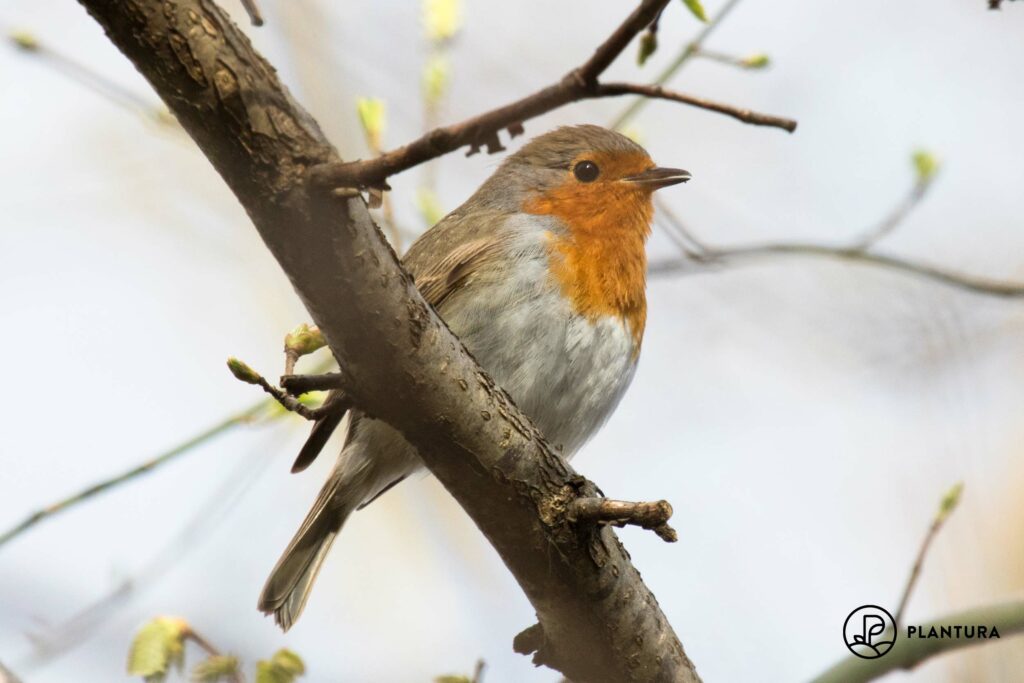
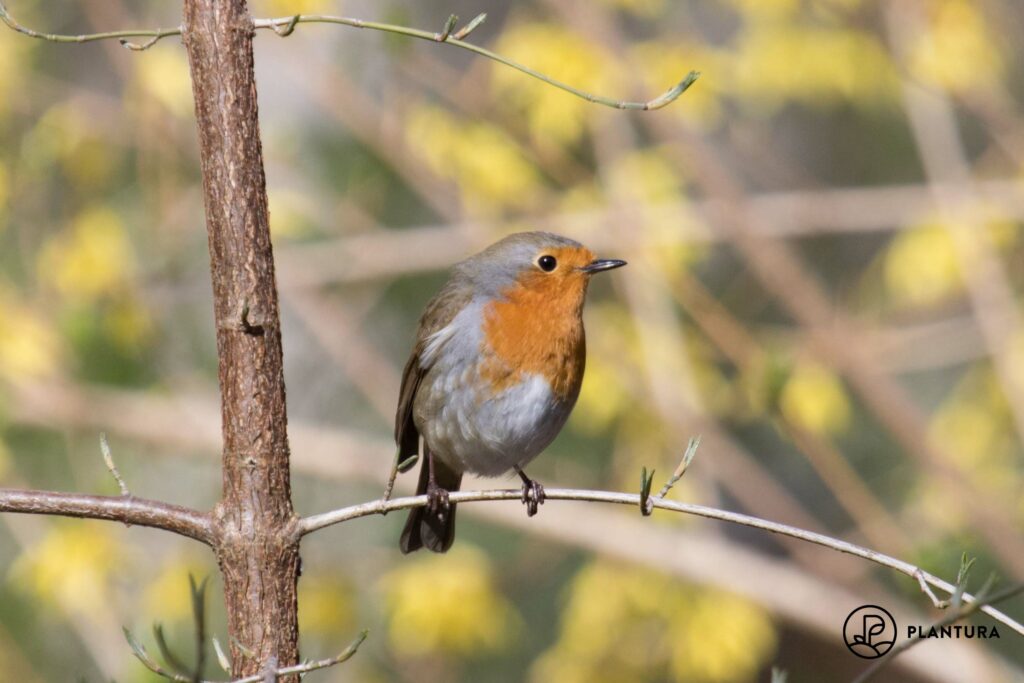
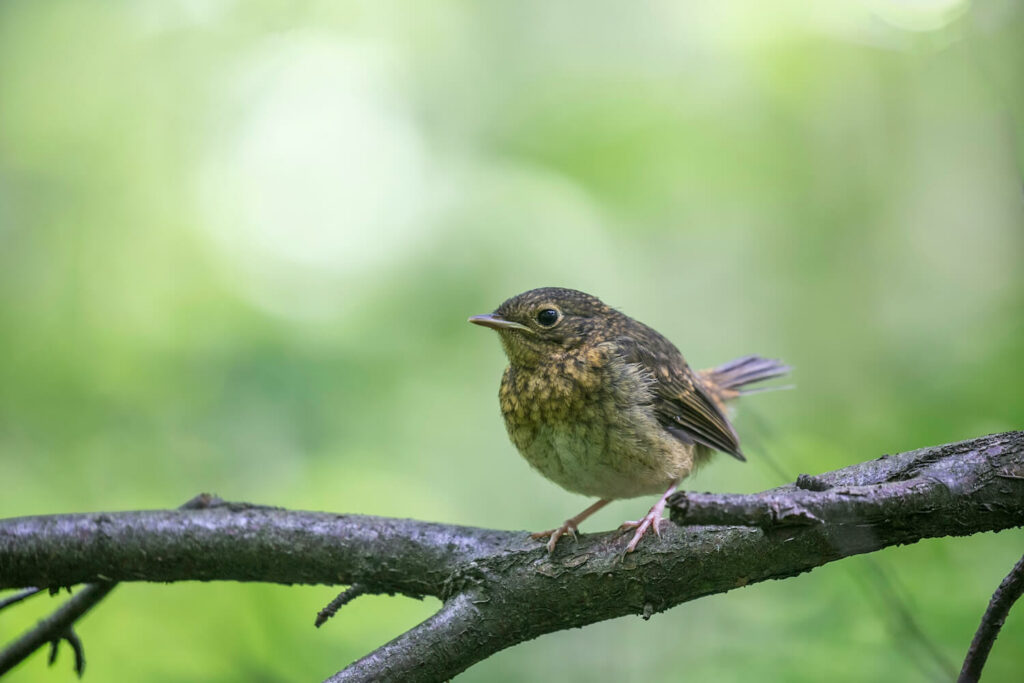
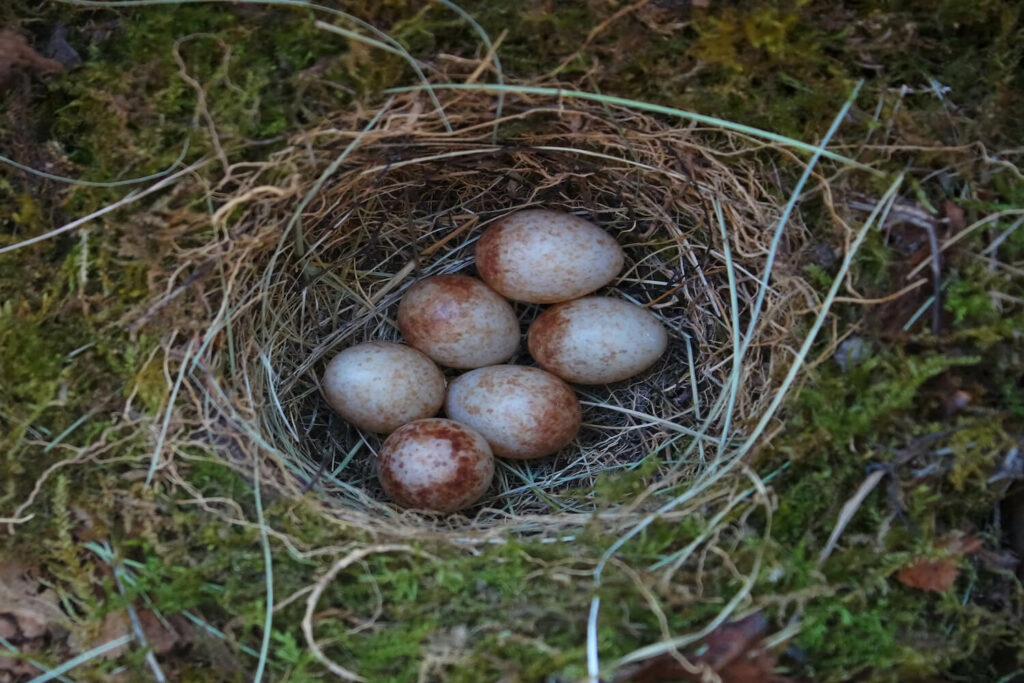
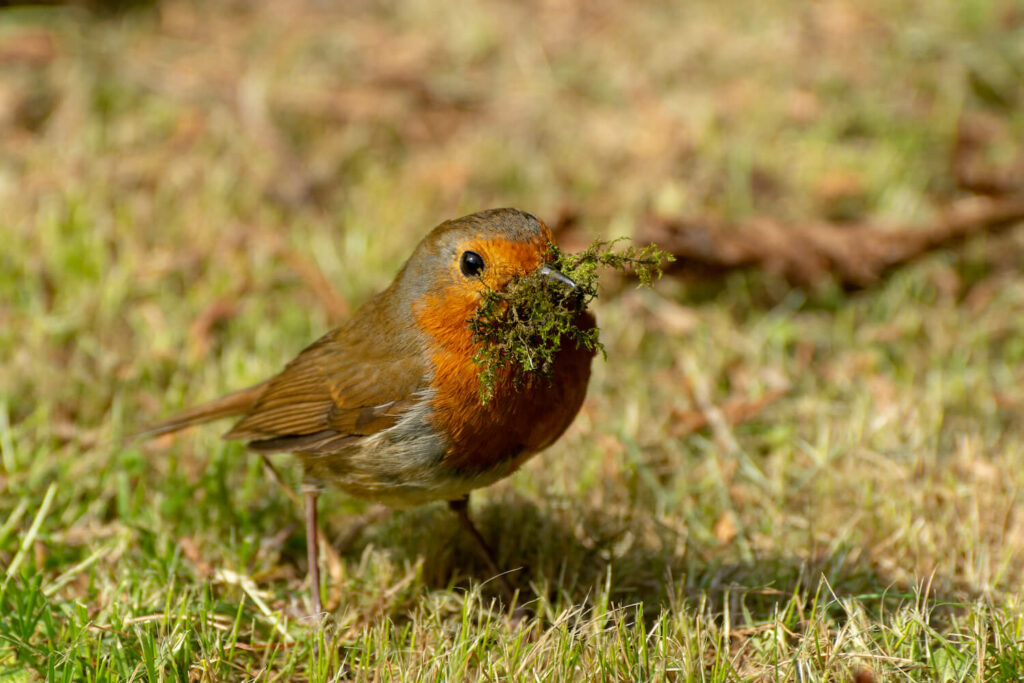
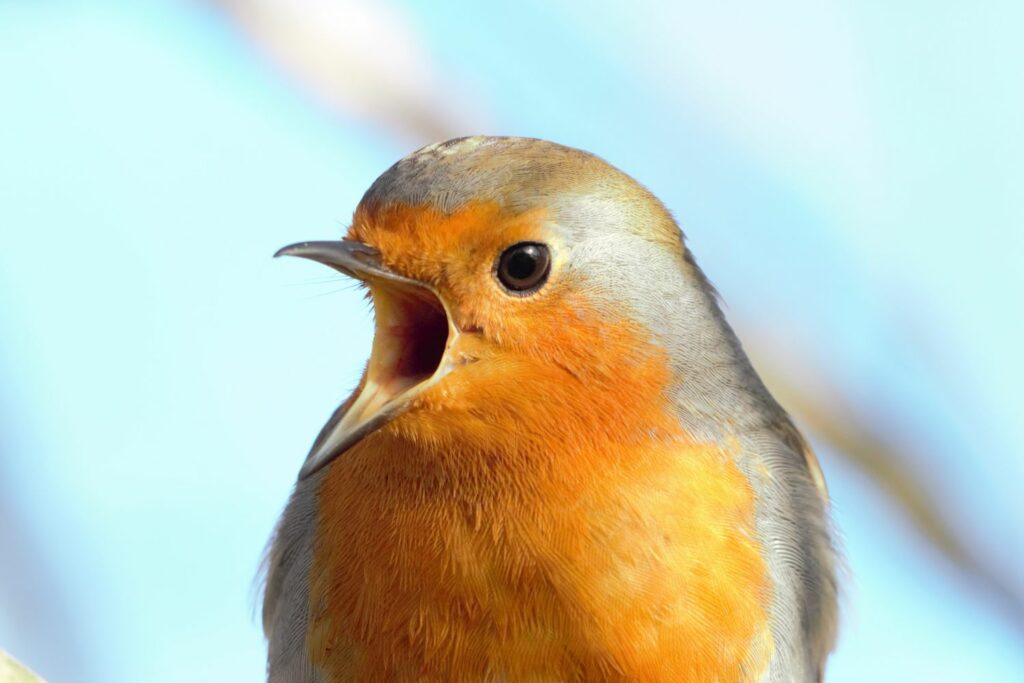

















 To the Plantura products
To the Plantura products 


